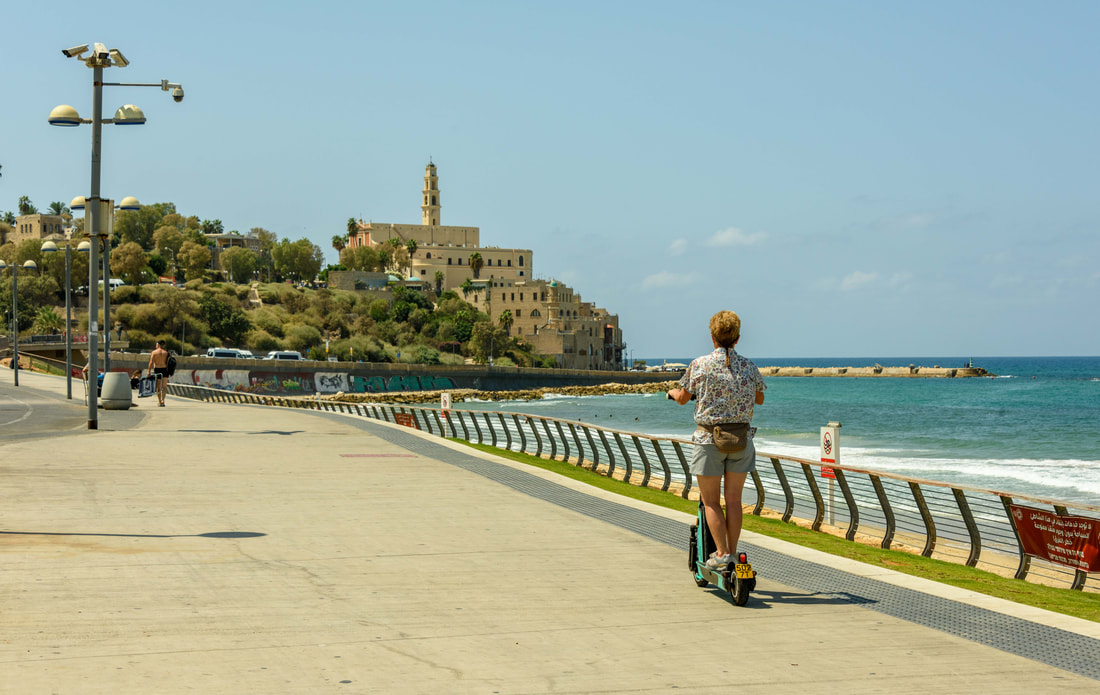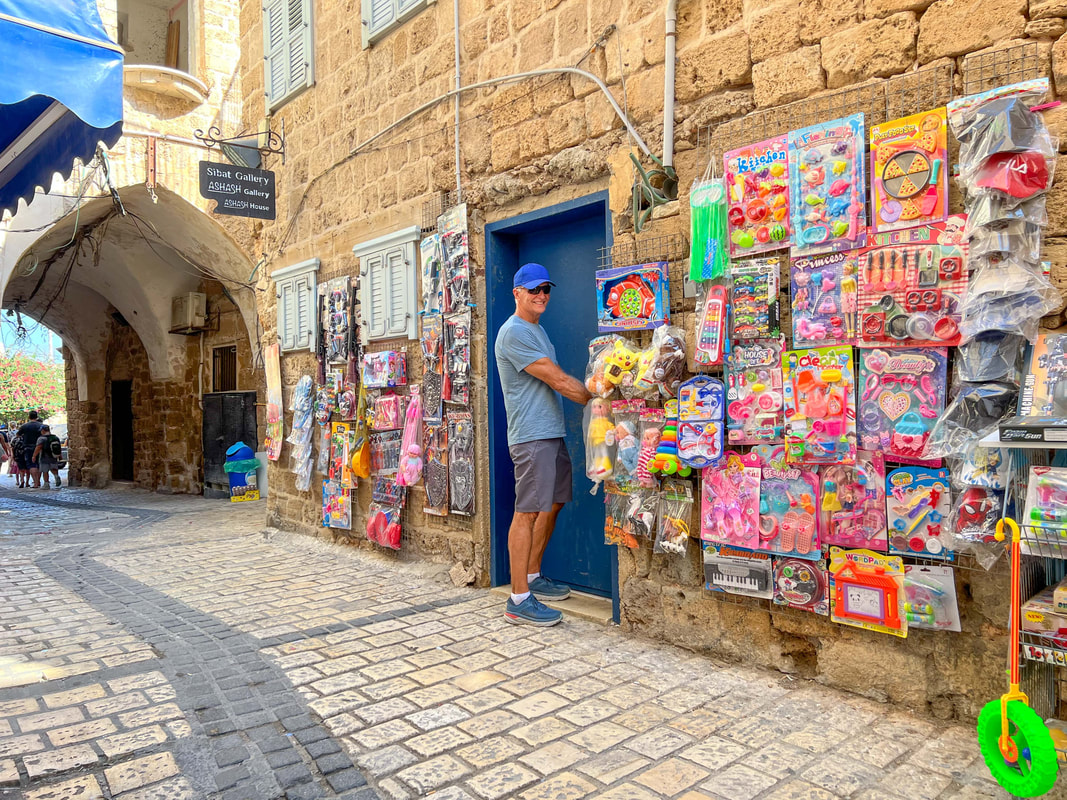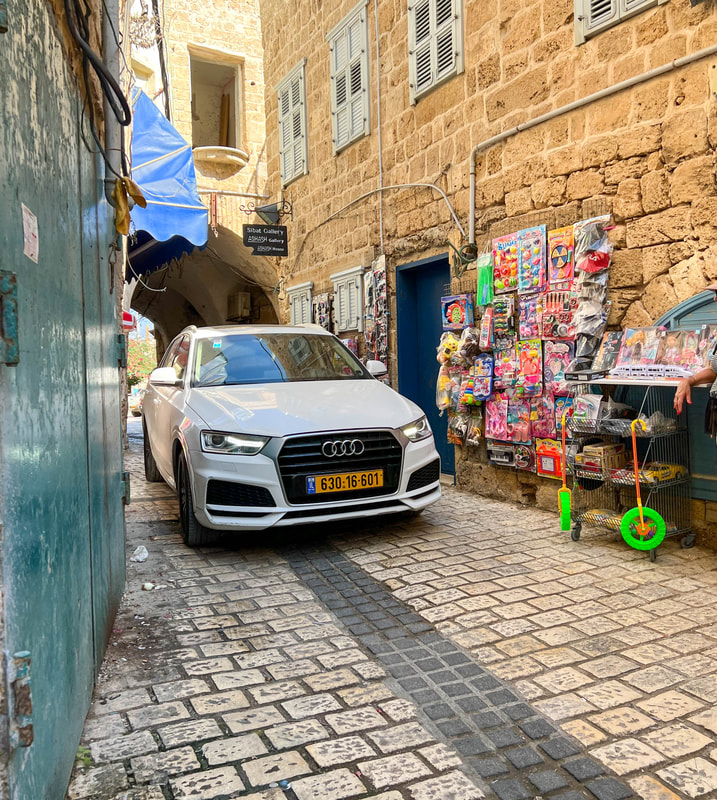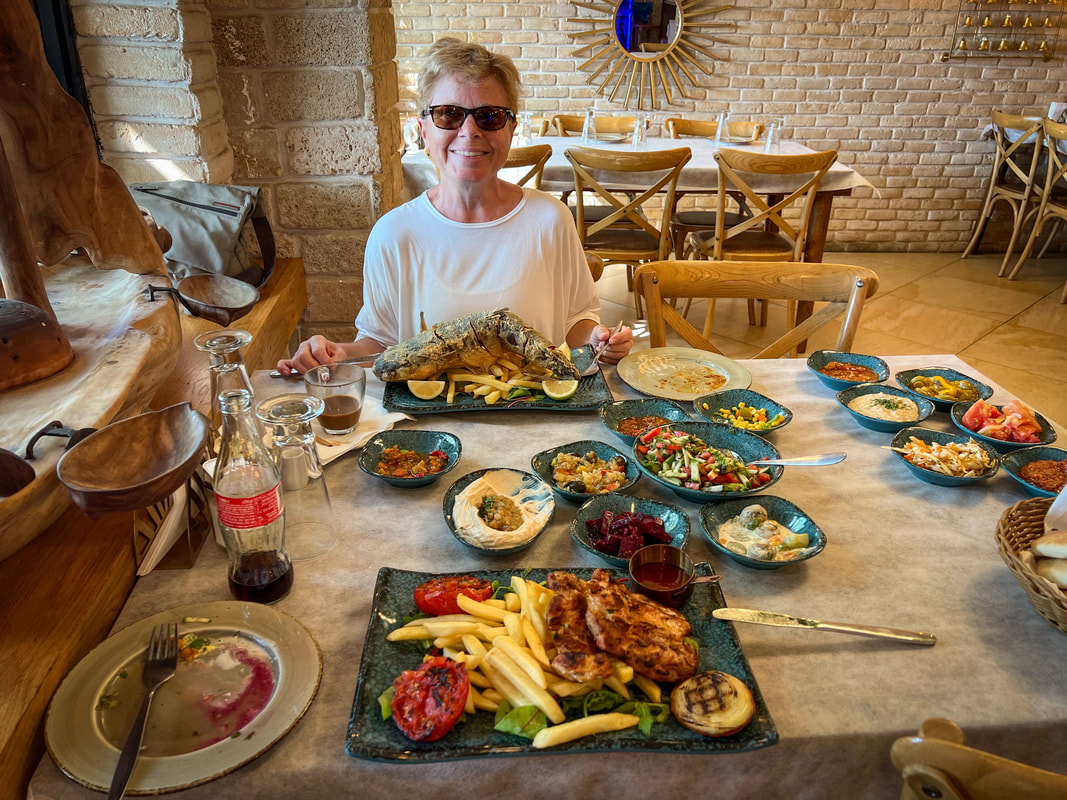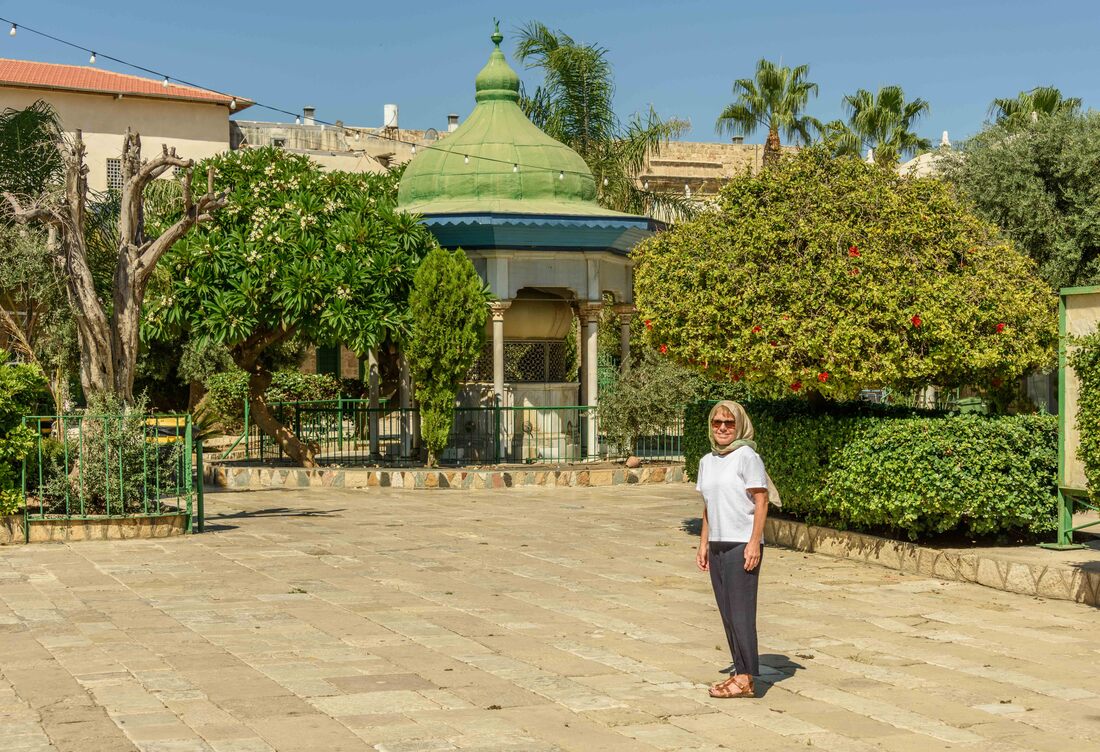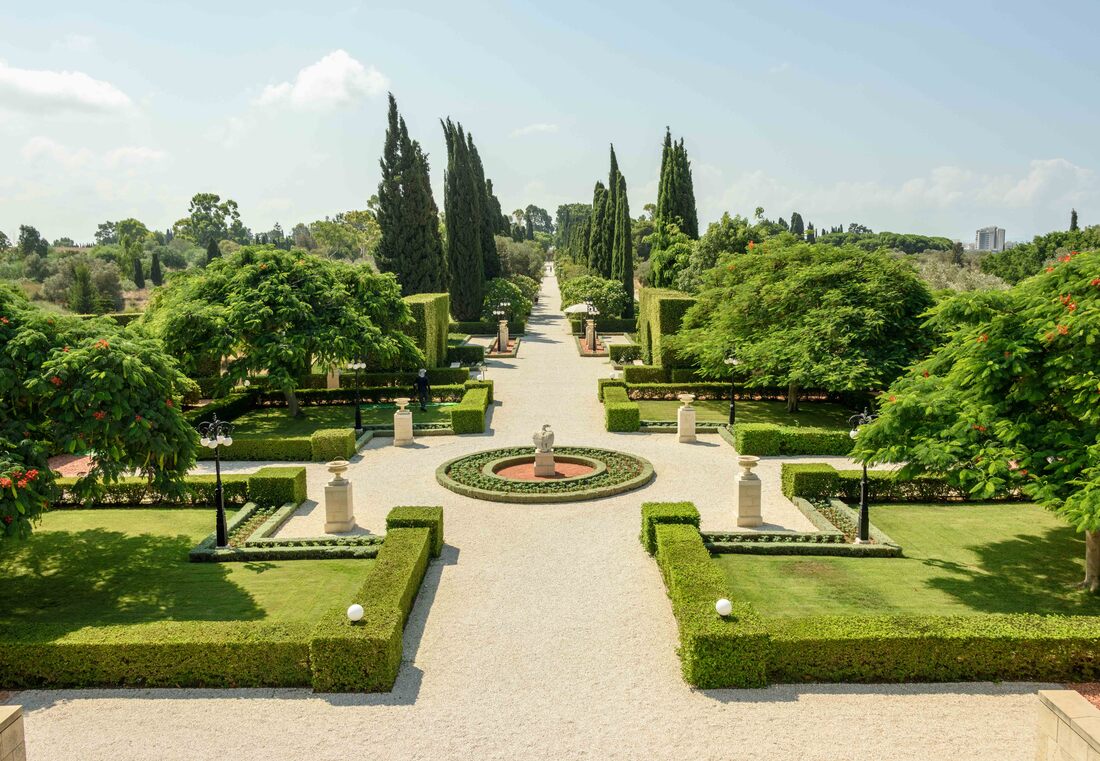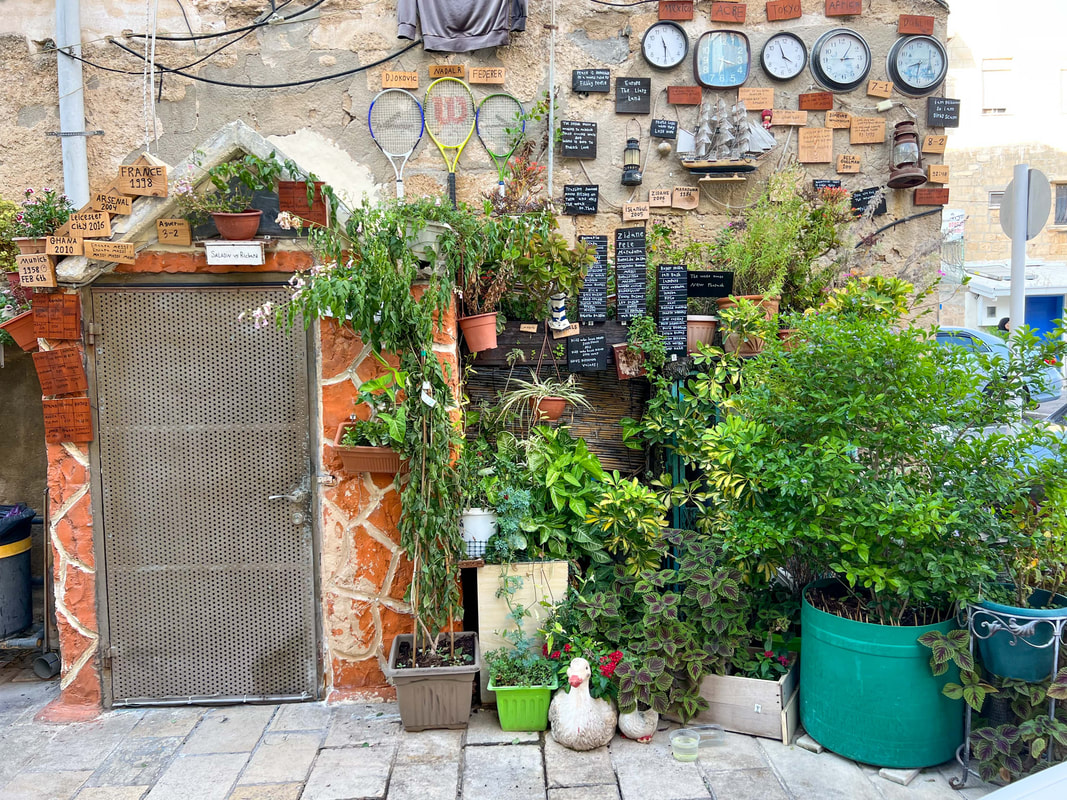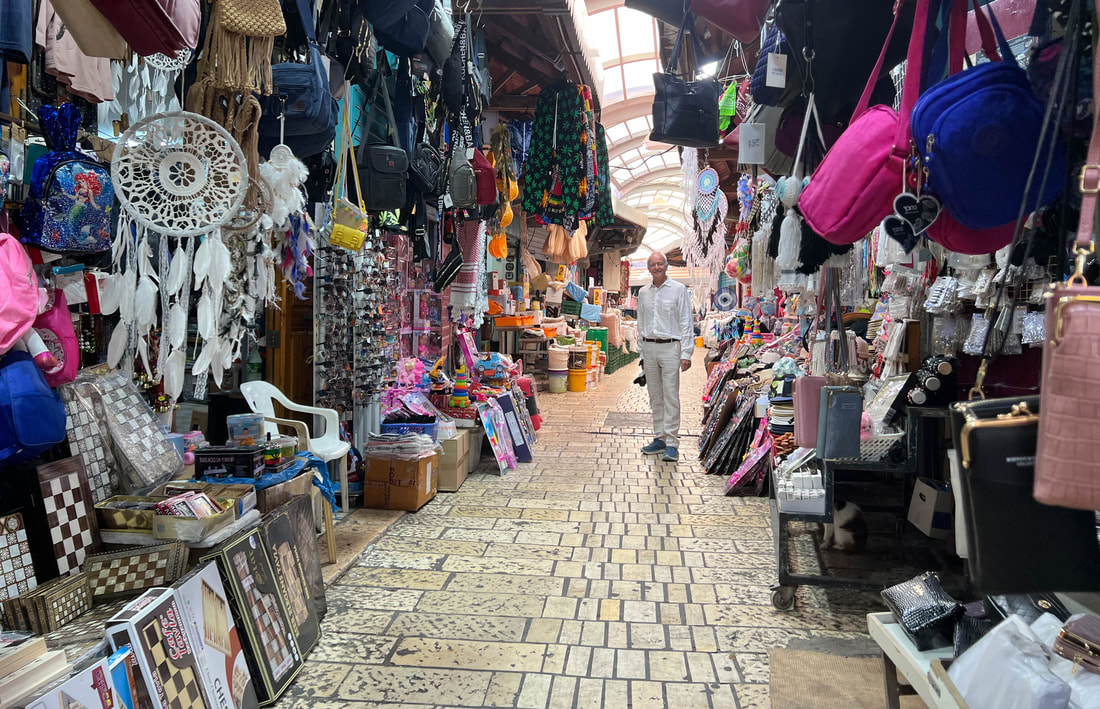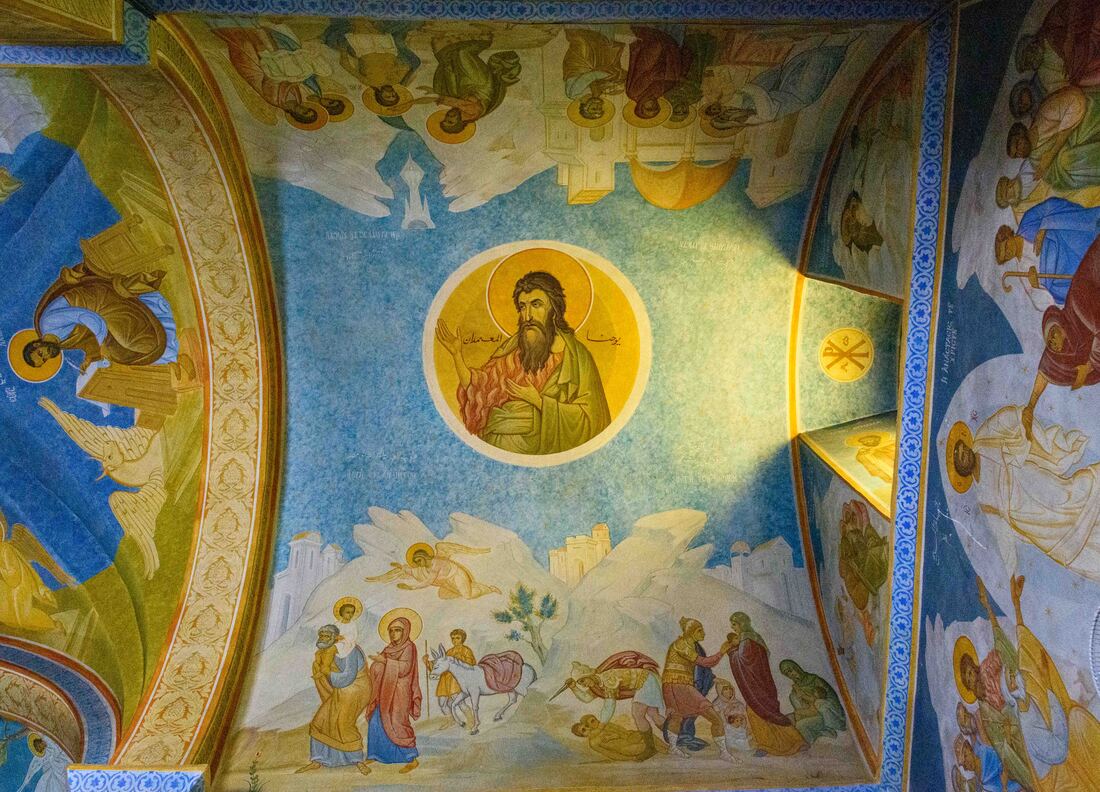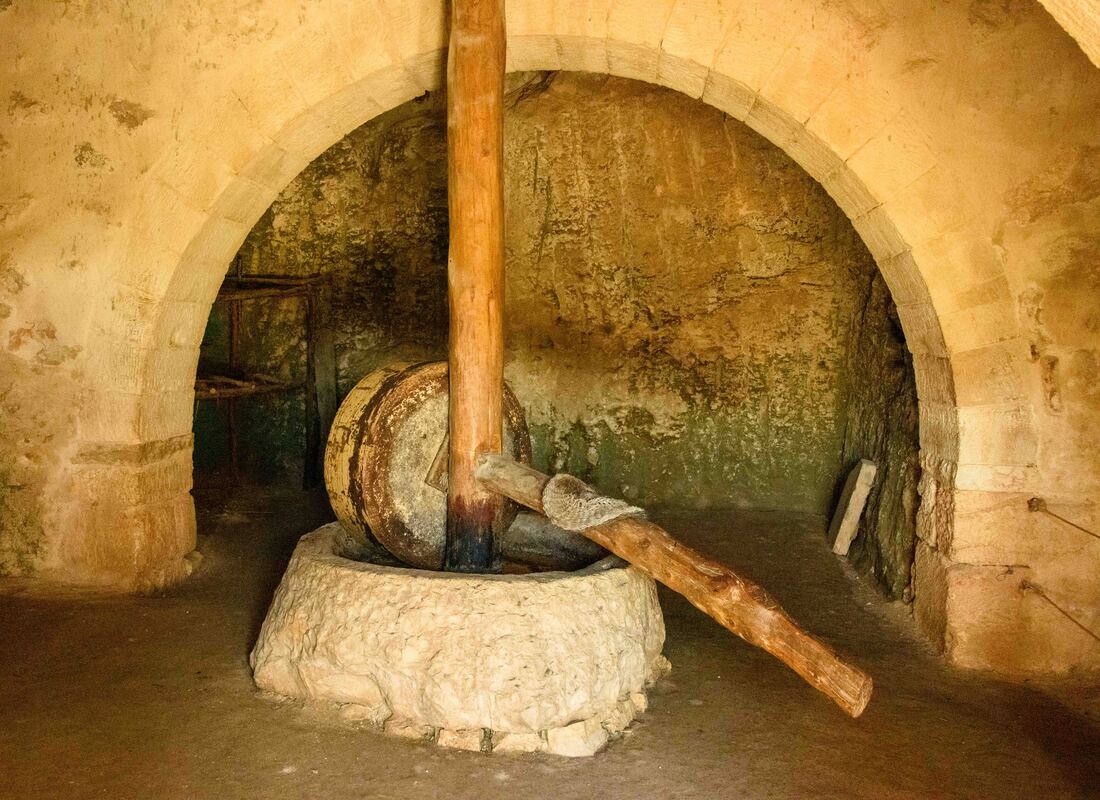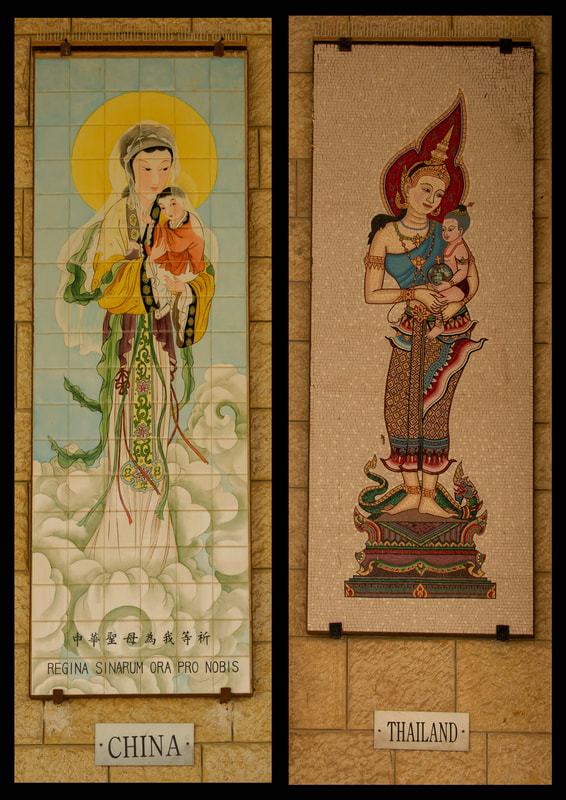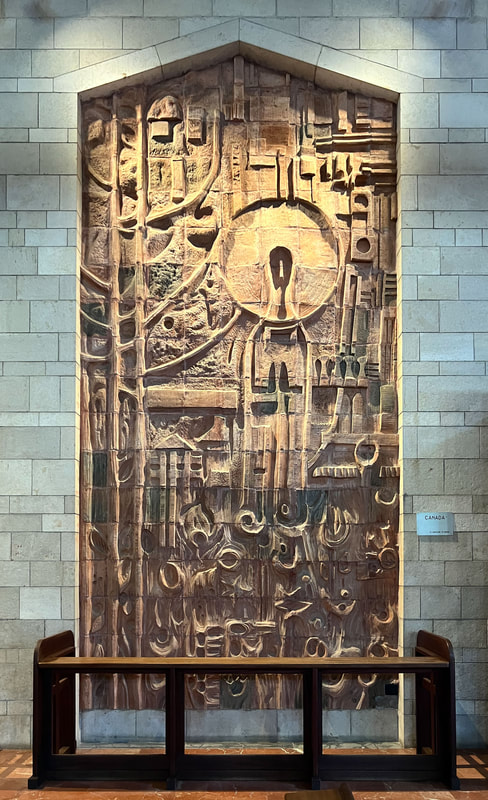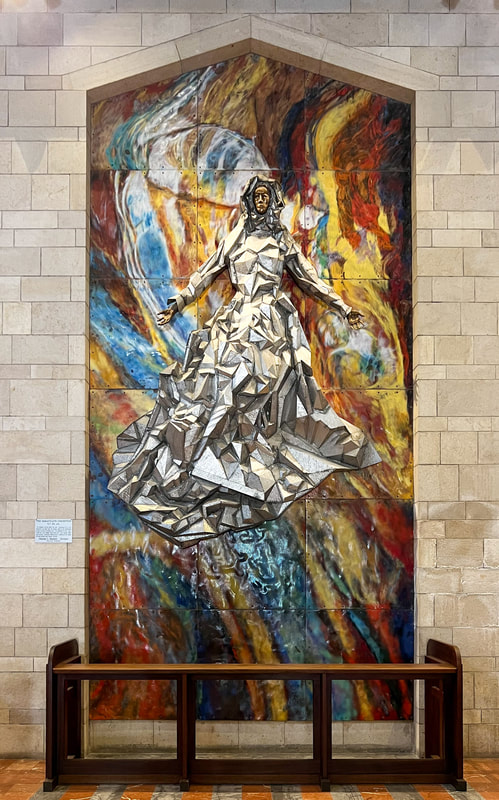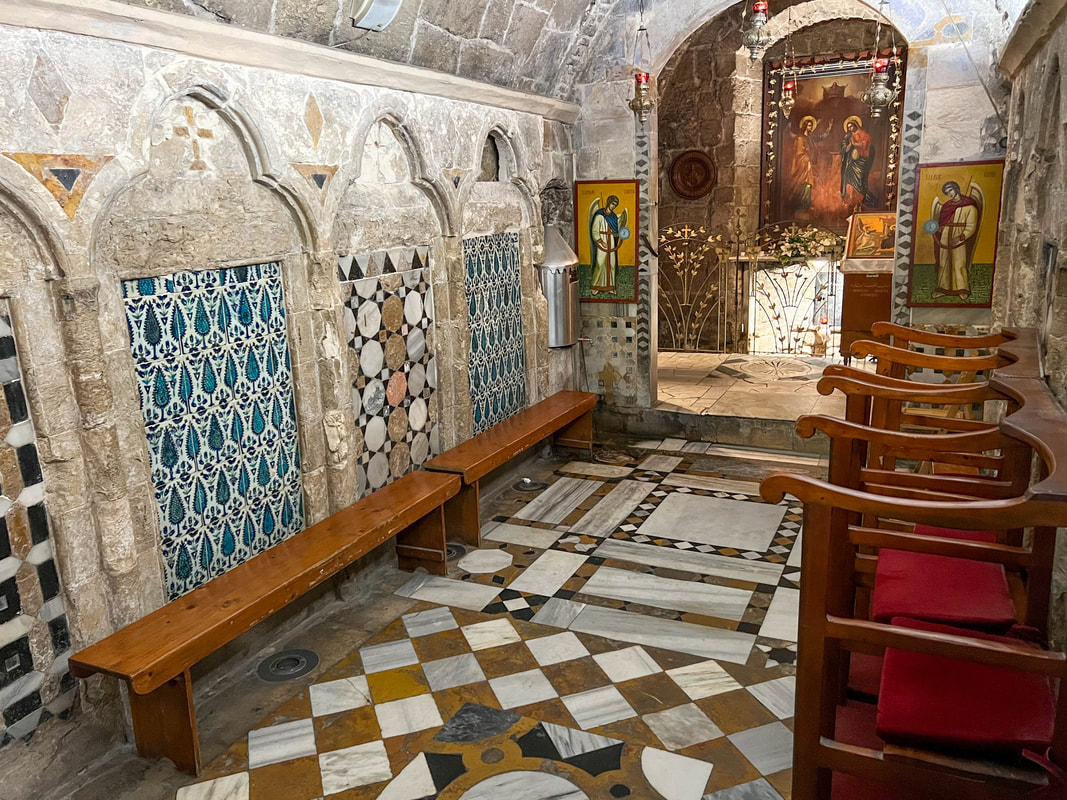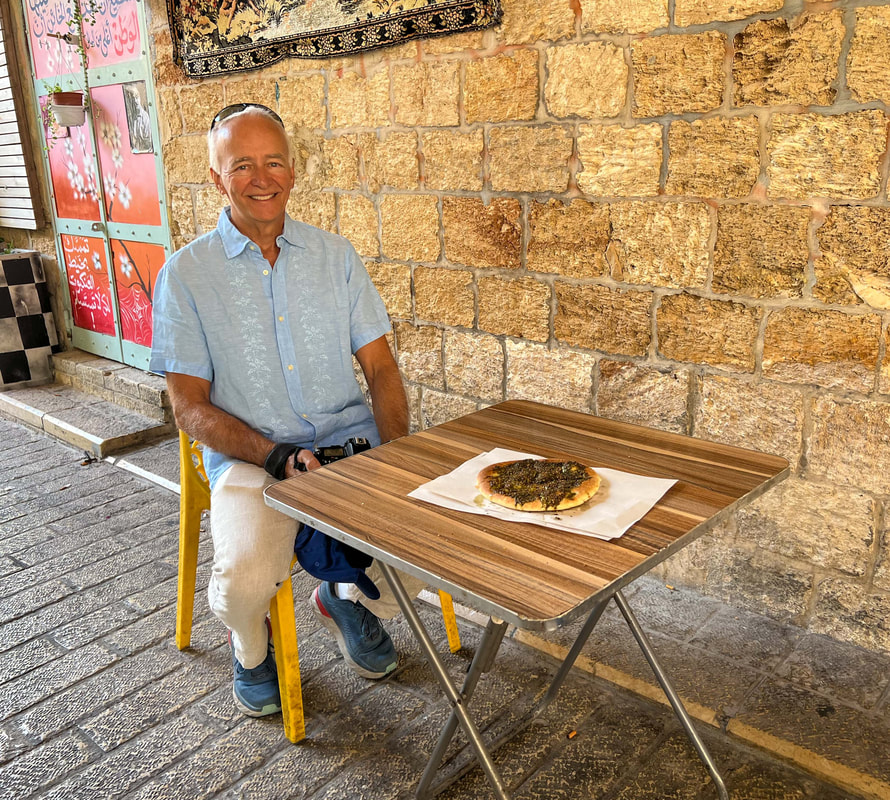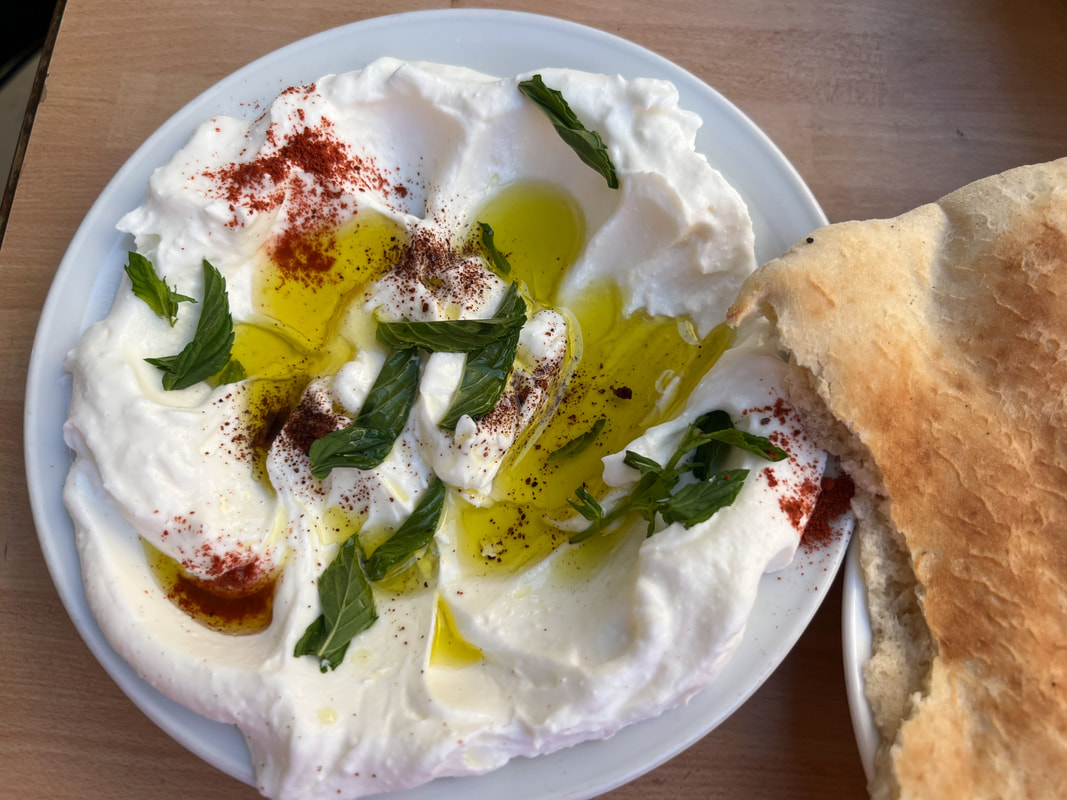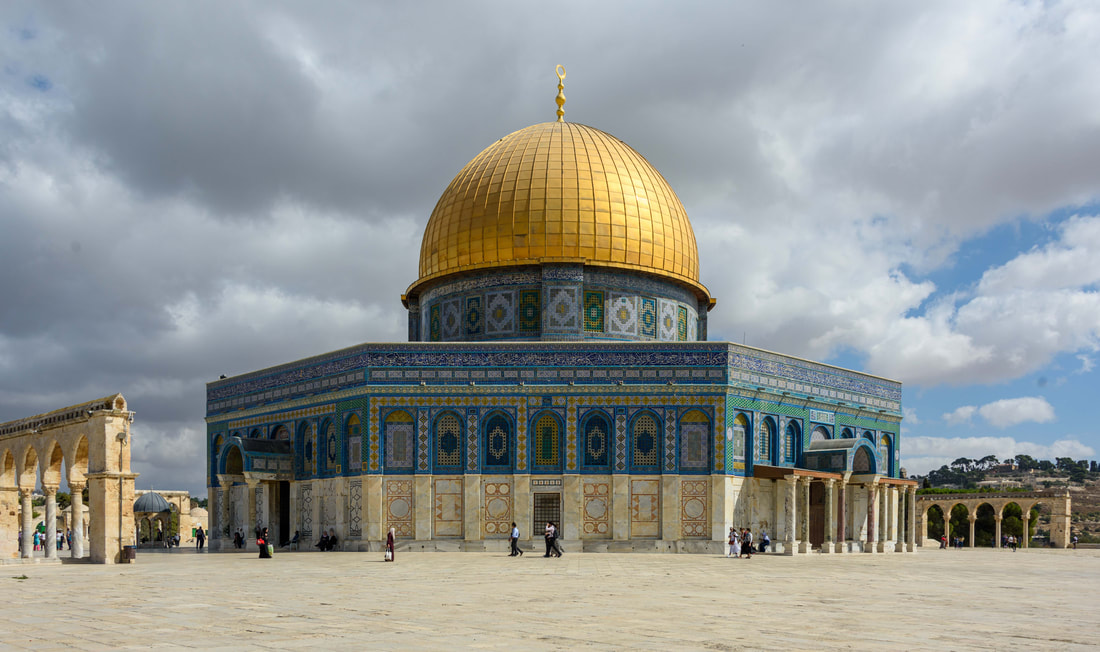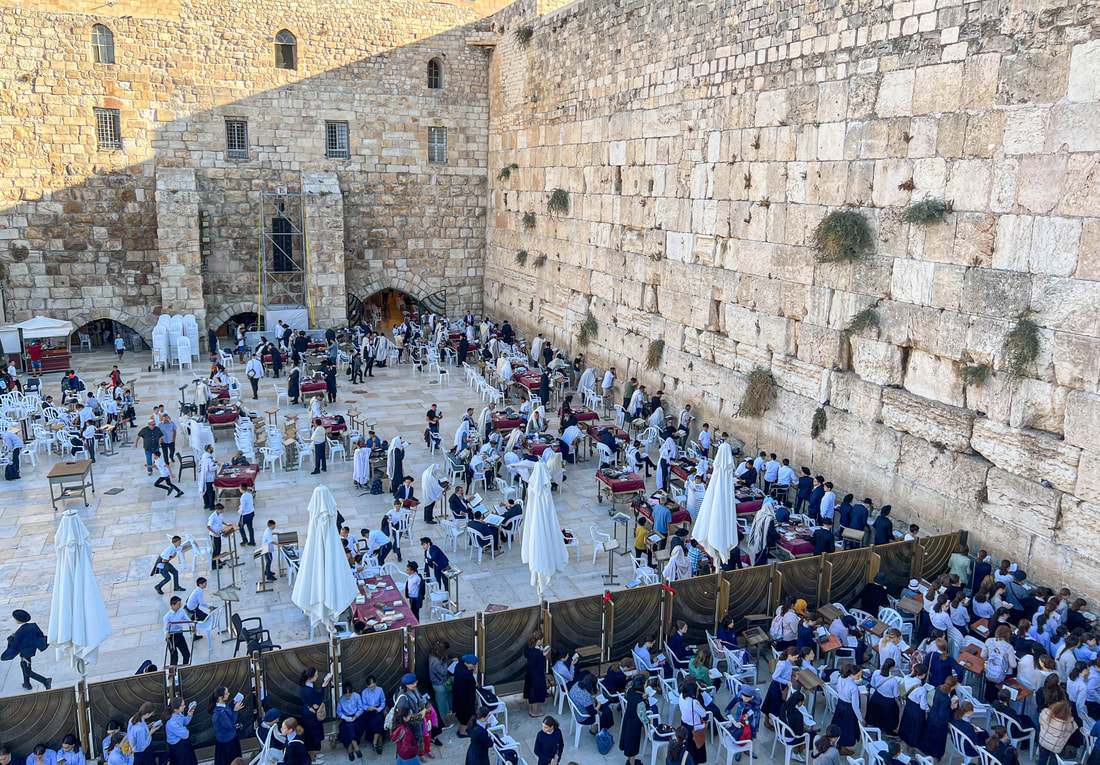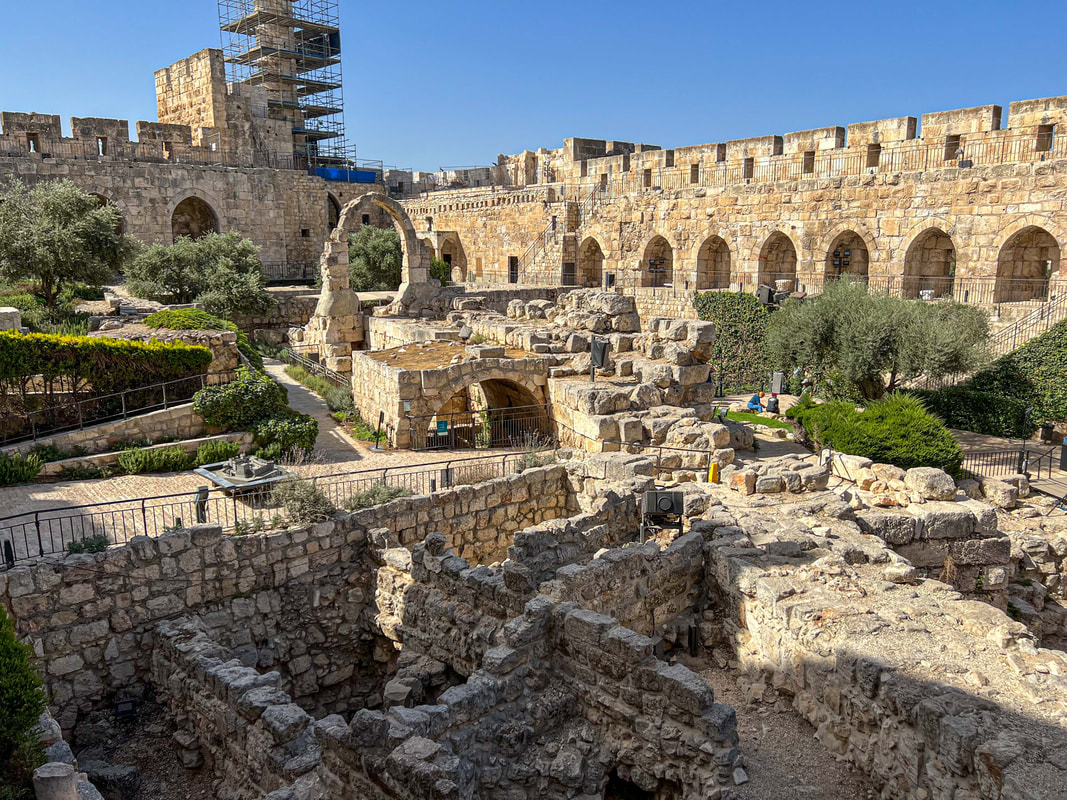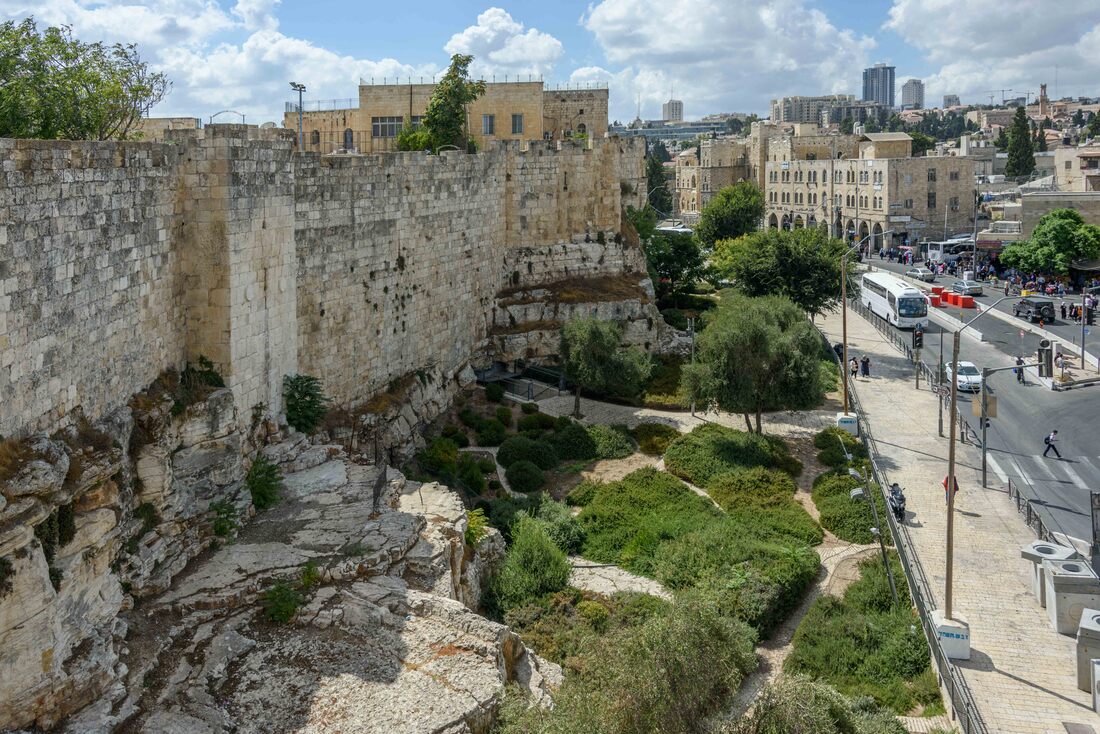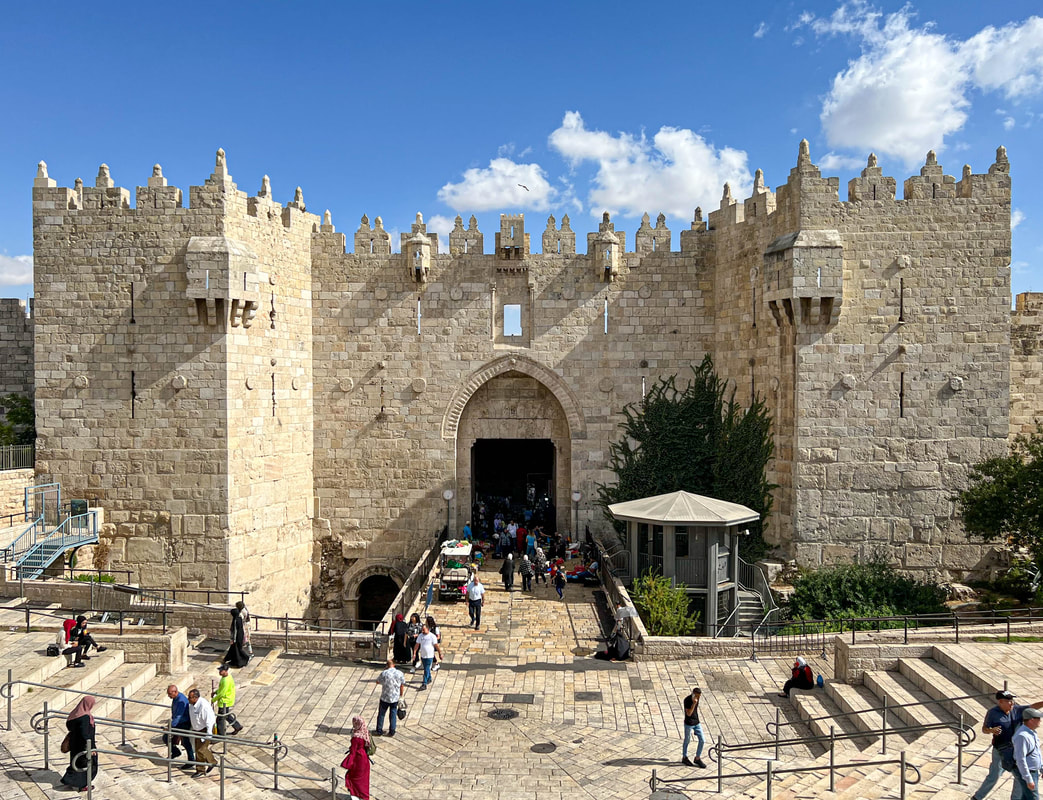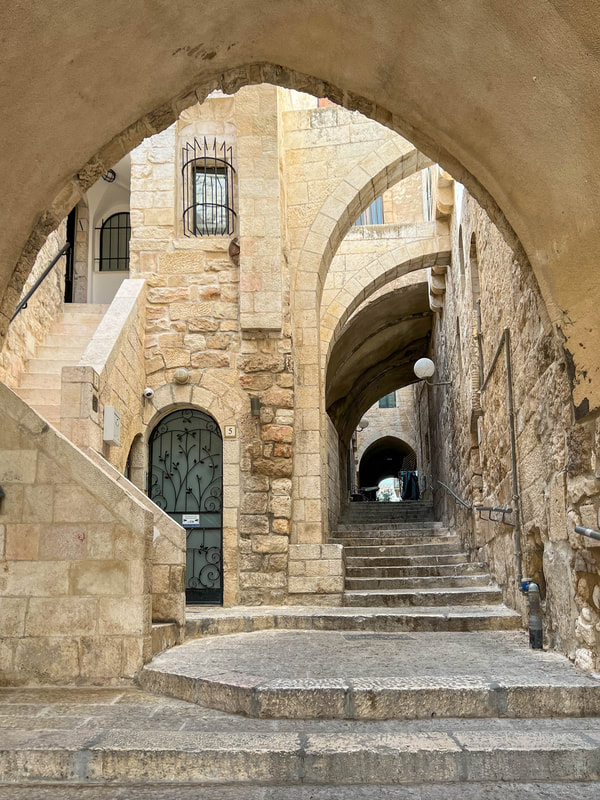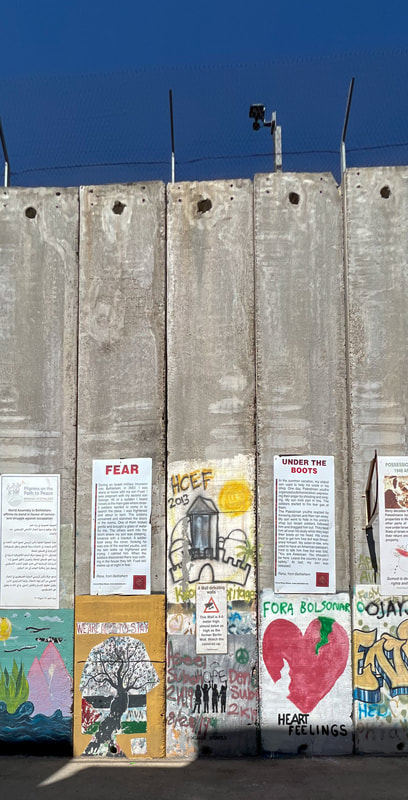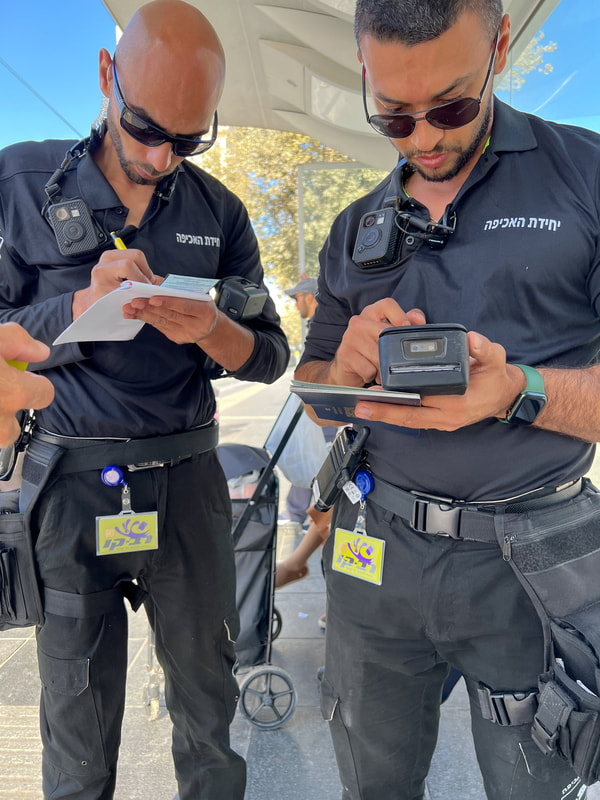Delayed by 2 years, and what felt like much longer during Covid, we’ve landed for a 3 month trip in the Middle East - Israel, Jordan Oman and UAE. (Aug 30 - Nov 29, 2022)
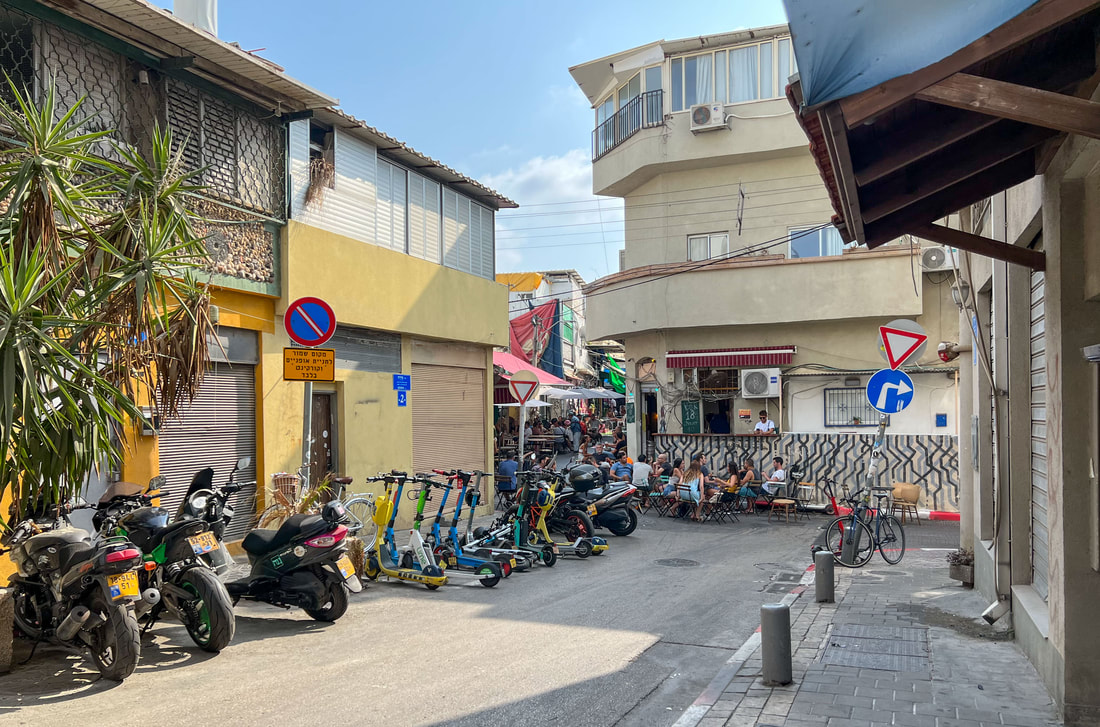
In 28 degrees at 1 AM our GETT driver (Uber style) pulled up to our apartment to a view of blocks of side-by-side outdoor patios filled with young people in high spirits and loud conversation. What separated us from them was just the two steps up to our ground level apartment door. At 7:30 AM, once again the tables and chairs came out and coffee replaced beer. We are, as our guidebook and surprised driver told we two seniors, in ‘the hipster part of the city’. Our apartment was a couple of inches to the right of the man sitting on the 1st floor balcony under the air conditioner.
Happy Birthday Rick! (Tel Aviv, Sept 1-5/22)
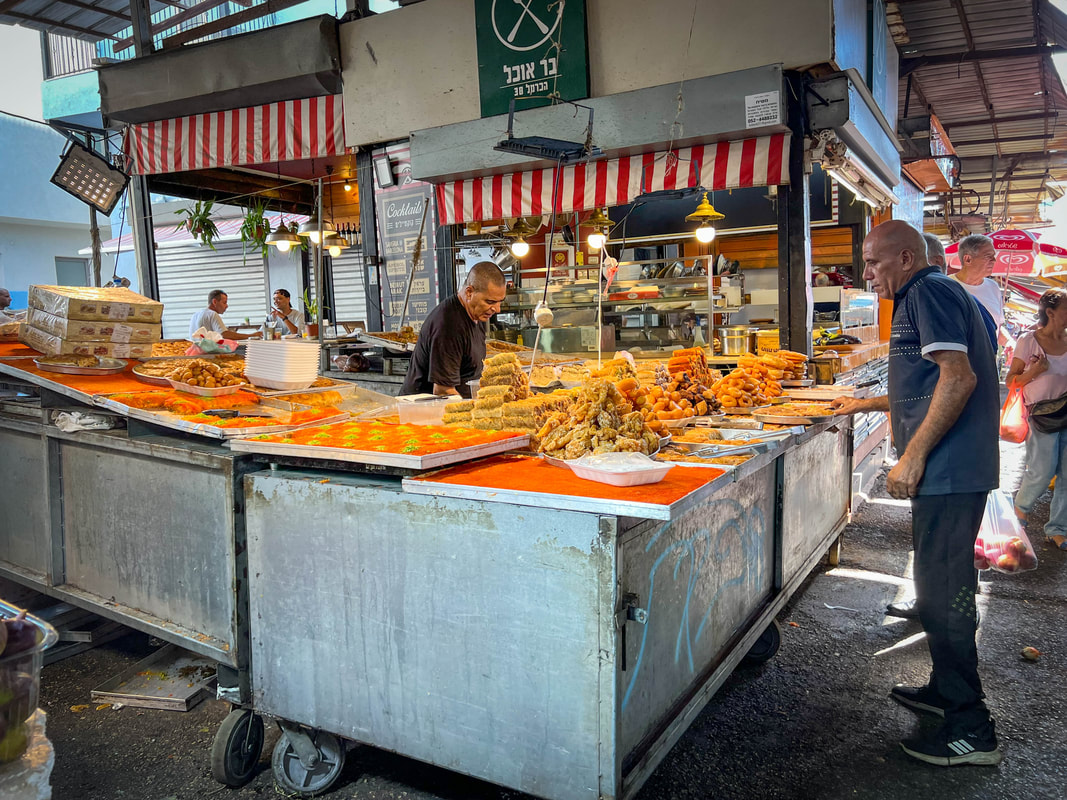
After a $90 breakfast (looked like $40 back home), it was time to shop for some food. Onions are a staple in the meals, so I will have to make my own versions. Luckily Tabouleh is common, as are its ingredients. The lively, on the must-see list, Carmel Market was a block over and supplied everything needed. Rick researched this trip, and he aced our central location.
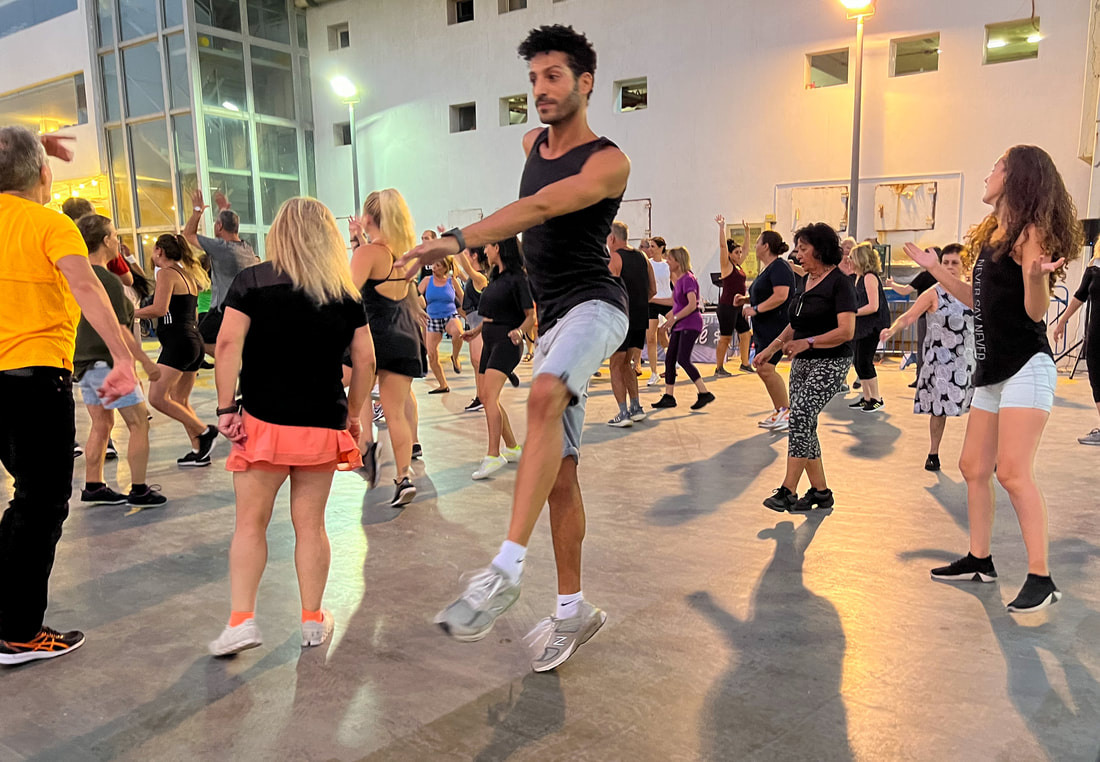
Shabbat started at 18min before sunset Friday night and ended when 3 stars can be seen in the heavens on Saturday night (or, put less romantically, an hour after sundown). Even in largely secular Tel Aviv, where the observance to Shabbat prohibitions are minimal, it was blissfully quiet for the duration. However, when sunset brought an end to this week’s Shabbat the Saturday night folk dancing started at Greco Beach. Open to all, everyone danced their steps solo, and later in pairs, while slowly moving in a large circle. The melodic music and ocean breeze was soothing.
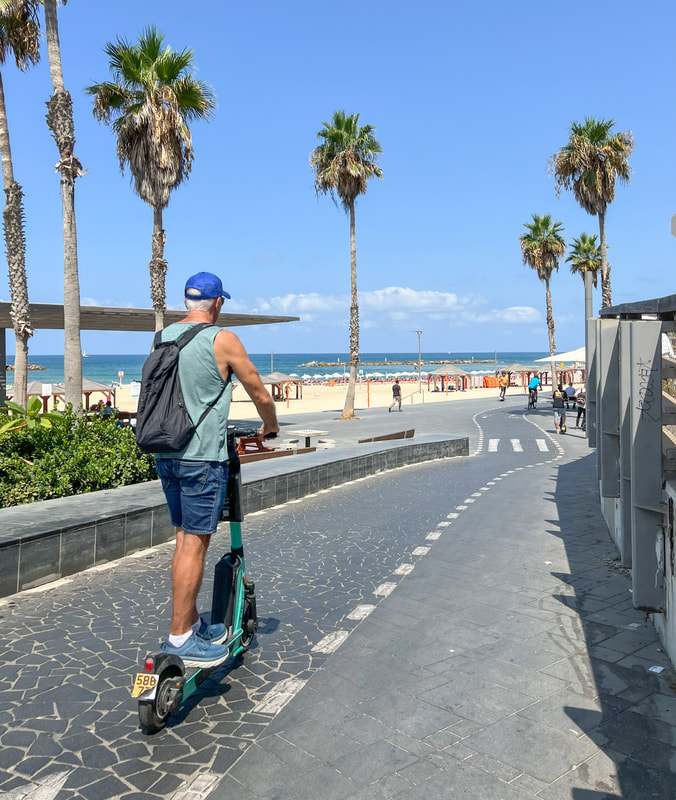
The number of young people in this city is palpable and feels more-so in the part of town we’re living. Of Tel Avis’s residents, 40% are under 29yrs old and rap music pounds from cafes and along the beach. The median age in Israel is 30, whereas in Canada, heavily weighted by baby boomers, it is 41. We channeled our youth and rode one of the ubiquitous scooters along the endless beach path.
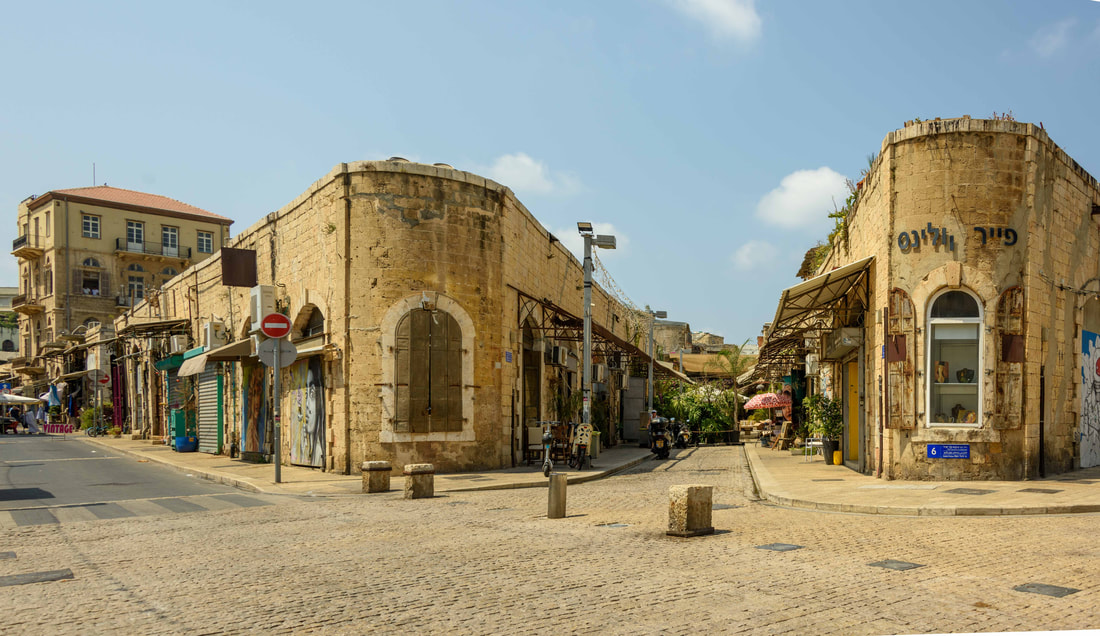
Today Tel-Aviv and Jaffa are considered a single municipality, but their histories are far apart. Tel Aviv was just a sand dune until 1909 when 66 Jewish families were each issued a parcel of land based on a lottery using seashells. Today one of the historic homes has seashells in its brickwork to commemorate the city’s inception. Conversely, Jaffa (above) is 4,000 years old and its port is one of the oldest in the Mediterranean.
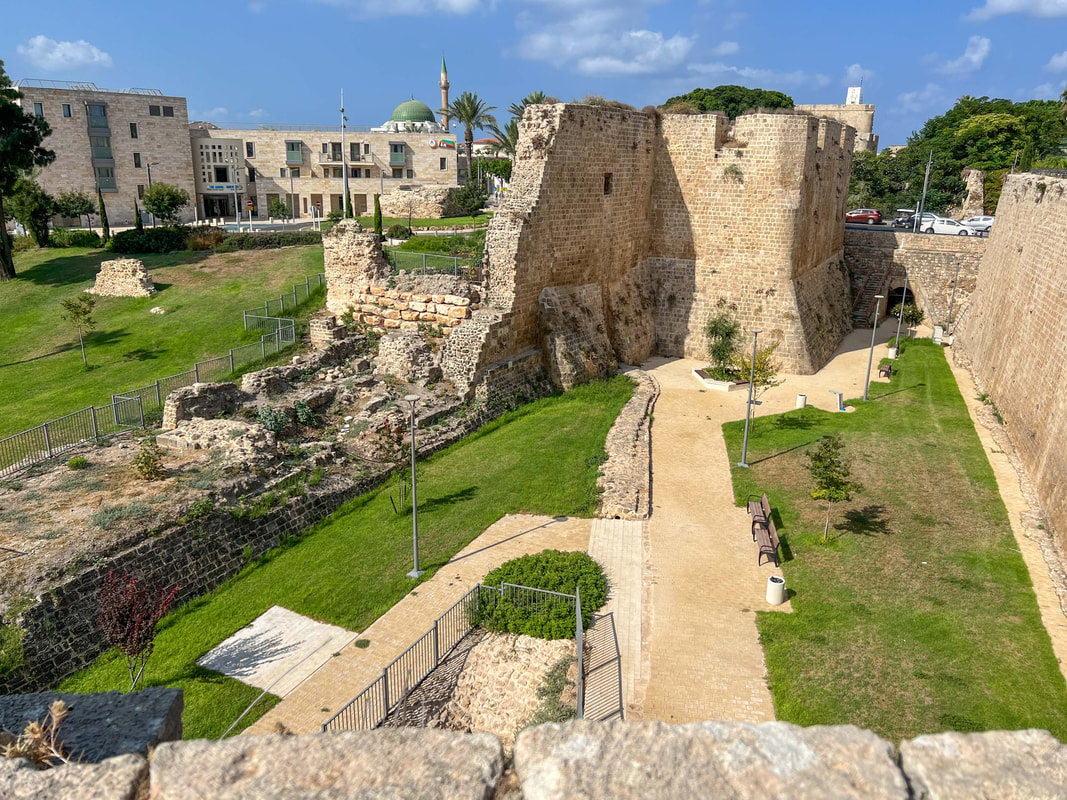
Fortified by a wall abutting the Mediterranean Sea, Old Acre has had a 4,000yr storied past. Still thriving today, it is among the oldest continuously inhabited settlements on earth. It’s 800-year-old prison was once the most highly guarded in the country and before ships became too large in the late 1800’s, it was a main port for the import and export of goods. Above: a dry moat surrounded much of the city, here converted to parkland and another section made into a basketball and tennis court.
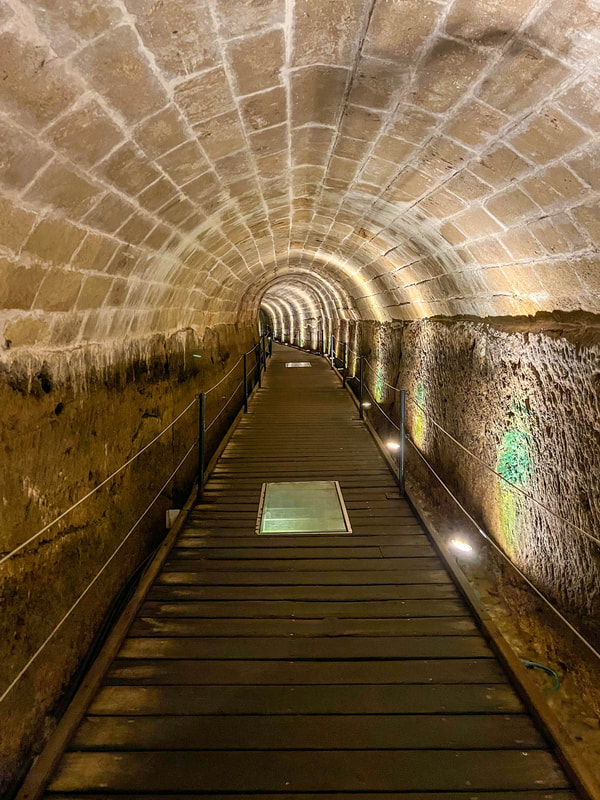
Almost a millennium ago religious pilgrims crossed the sea to land in Acre to be fed and nursed by the Hospitallers, in the massive Knights' Halls fortress, before continuing their journey to the Holy Land. To safeguard them from the perils of the journey, the Knights Templar provided protection. As a part of protecting the pilgrims, a 60m Templar Tunnel was dug from the town’s port to the Knights’ Halls.

The Baha’i have several holy sites around the world, but this one is the largest and contains the remains one of the most important prophets of this 180yr old religion. Of the reading I did, what struck me most was “central to the Baha’i Faith is that all human beings are equally God’s creation regardless of gender, race, nationality or creed and should be respected and treated without prejudice.” (Haifa, Sept 11-14/22)
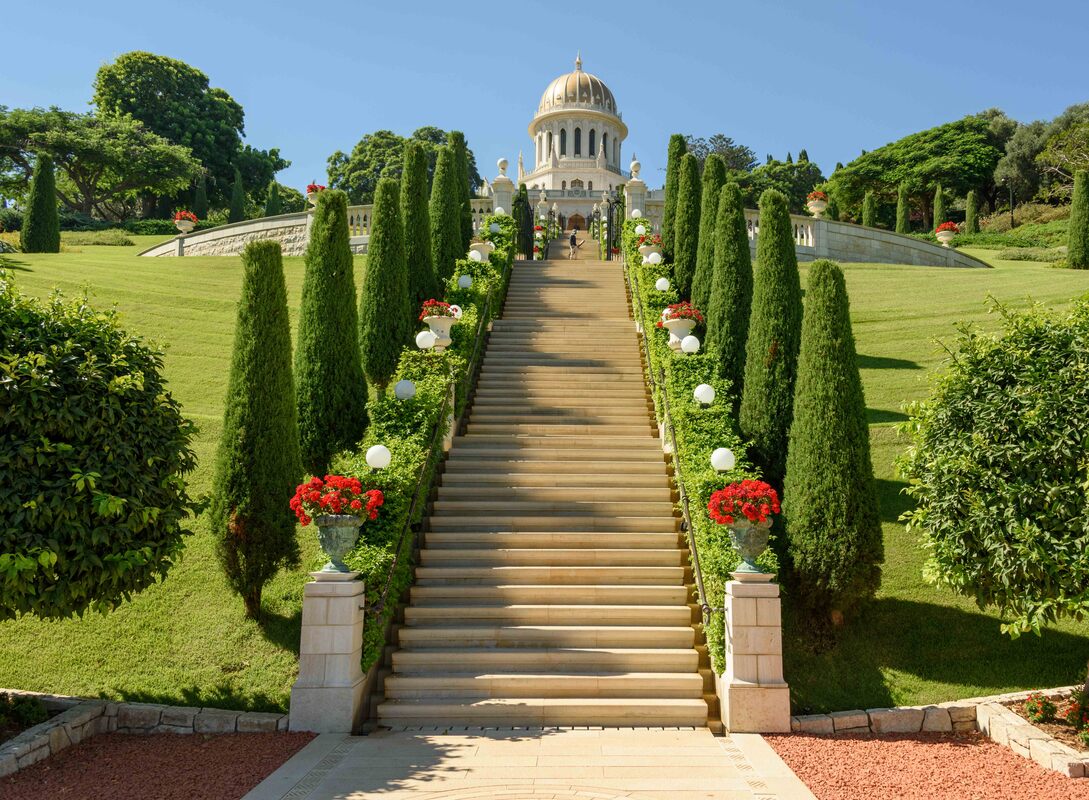
The Baha’i Gardens were constructed and continue to be maintained with the most environmentally conscious practices available. Their website lists a truly impressive scope of activities to achieve their goals, including a computer-controlled irrigation system that measures soil moisture and meteorologic data for optimal water utilization. The 19 landscaped terraces are intended to calm and bring peace to the pilgrims and volunteers as they ascend the 1,500 steps to the top.
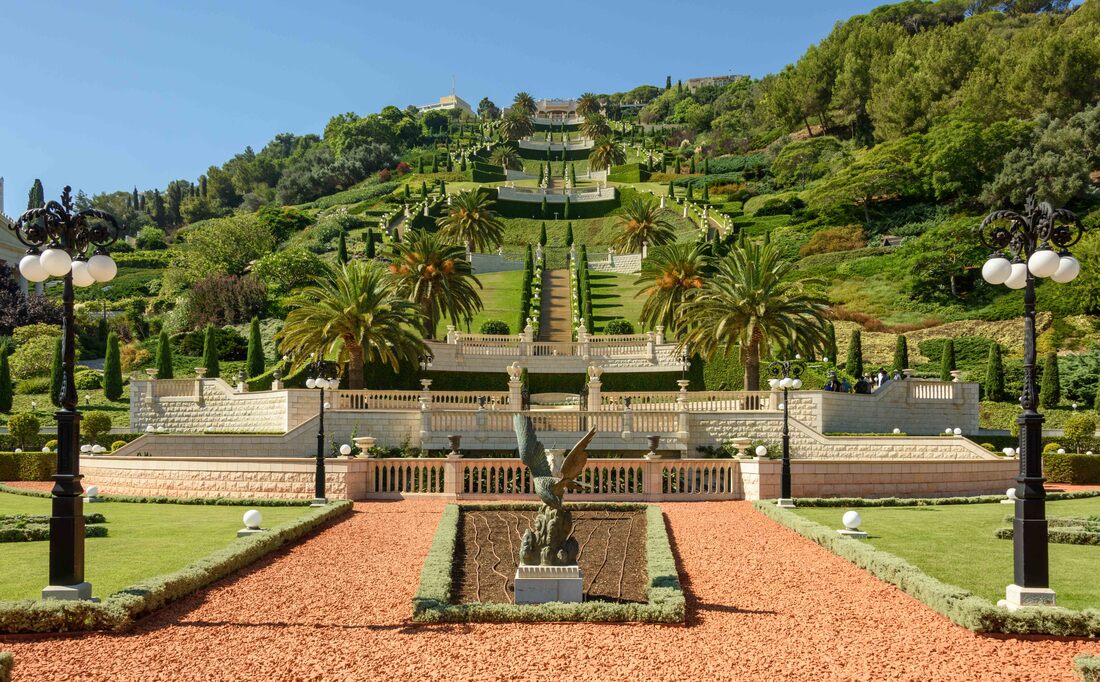
Fun facts: This site was completed in 2001, 600-700 Baha’i volunteers maintain it and a Canadian (of Persian decent) designed the gardens. The tour of the garden is free, and they do not accept any donations. All Baha’i facilities are self-funded by the only 8 million (worldwide) followers of the faith.
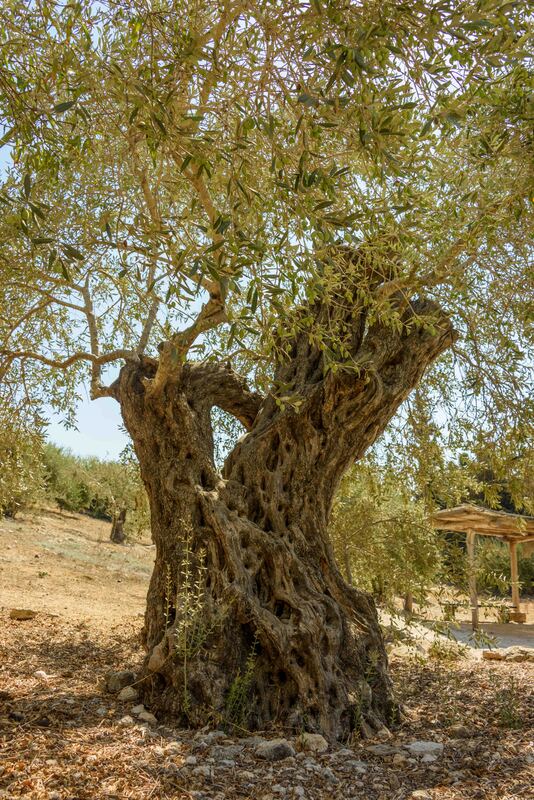
Using daily scenes to illustrate the meaning of the bible’s parables, the Nazareth Village living museum gave us insight into how Nazareth’s 300-400 residents lived during Jesus’ times. Today the population is over 100,000 and on the periphery of the Old City a Microsoft R&D building announces itself with a huge neon sign. Olives and olive oil are a staple here and it’s not uncommon for families to know the history of their trees. Supposedly there is a 1,000yr old tree in town. Above: a 400yr old.
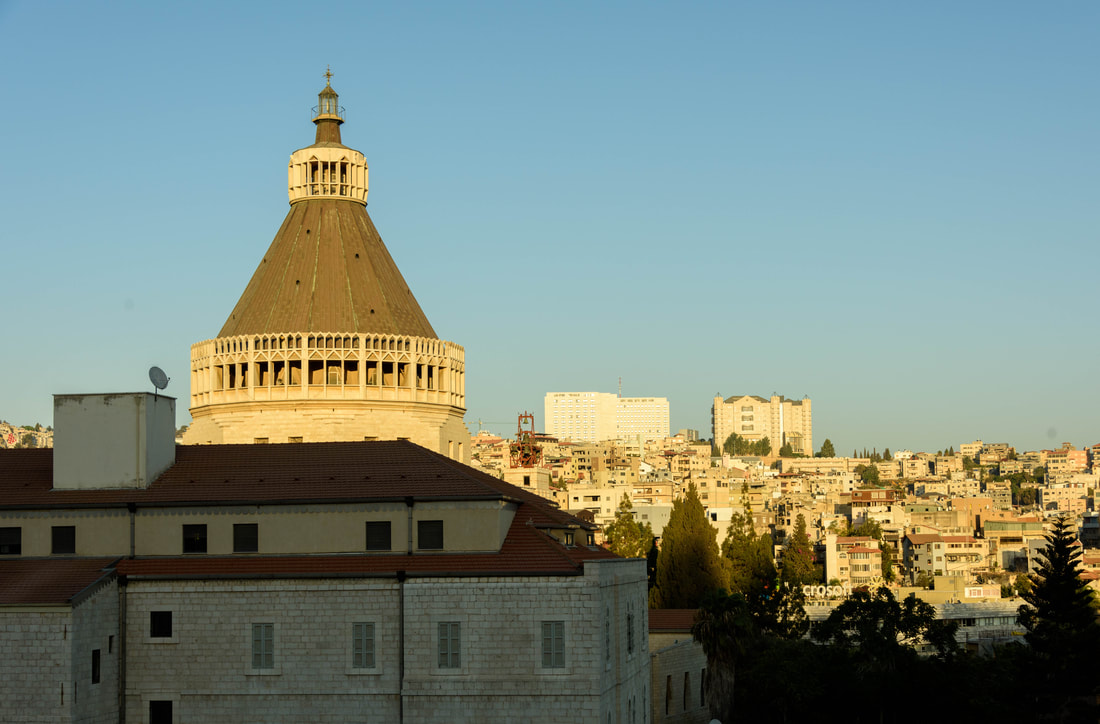
At 5am the Islamic adhan (call to prayer), followed by some nearby chickens serve as the day’s alarm clock. But if that just replaces your snooze button, you can count on the Basilica's 6am bells to fully wake you. Many Christians believe that the Annunciation (the angel Gabriel announcing to Mary that she would give birth to Jesus) took place in Mary’s home. Atop an excavation of the area she lived in, the massive Basilica of the Annunciation was built. It’s cupola towers over the Old City. This was the view from our apartment window.
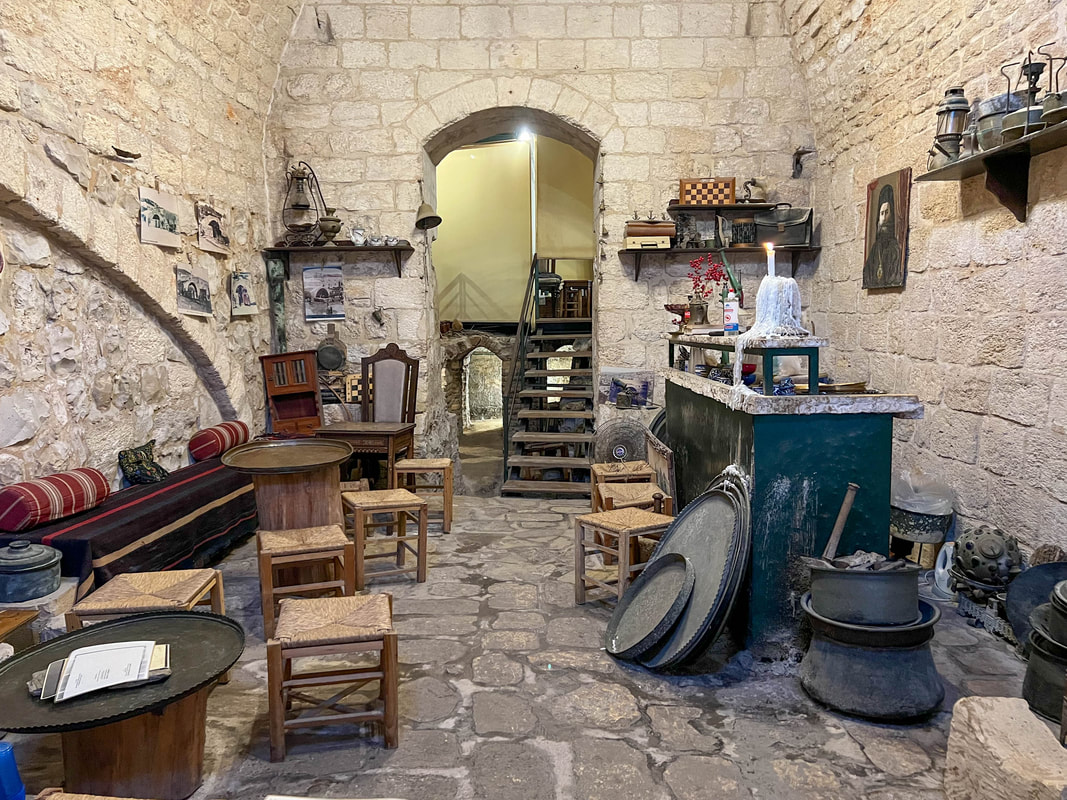
A couple bought a shop to sell their jewelry and when they started to renovate they, along with archaeological experts, realized they were sitting atop an ancient bathhouse from the time of Jesus. Unlike other countries where the location would be usurped by levels of government, the spouses continued to excavate by themselves and hang a sign out to say they offered tours. It was a little surreal. Above: as bathhouse guests moved from the 1st to 3rd room, steam pipes in the walls worked to progressively increase the heat. This room was once the hottest of the three. In the background, underground passages made up part of the bathhouse.
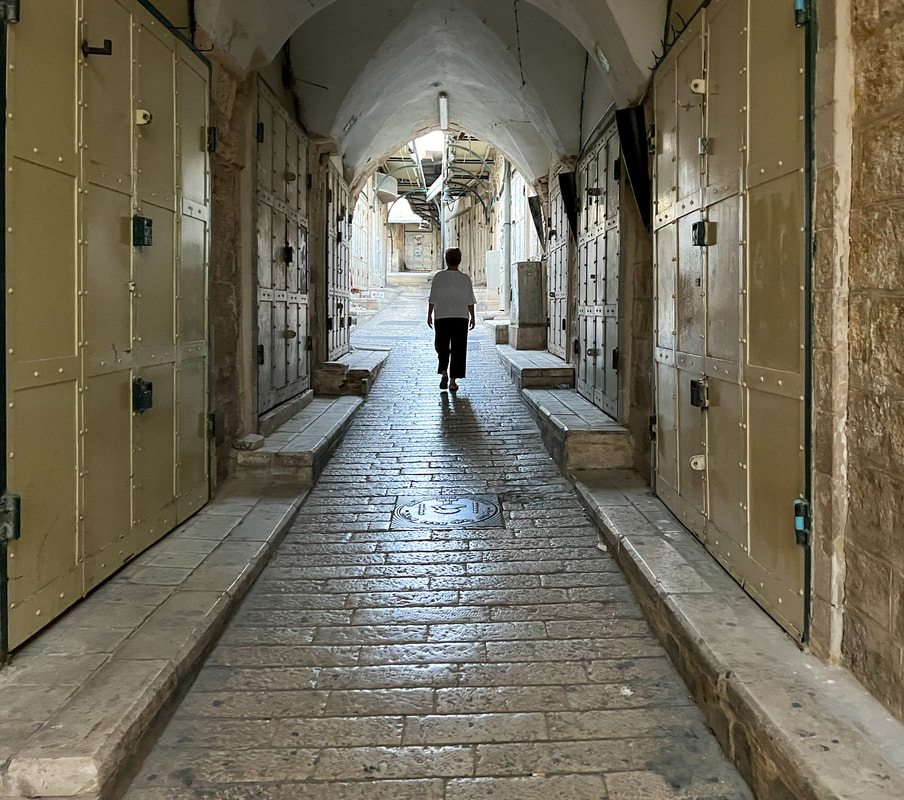
The high UV index and humidity along with 30+ Celsius days remain relentless, but here it cools off after dinner so that we can actually go for an evening walk without needing a shower afterwards. The souk’s stalls have all locked up for the evening, the stone halls swept and hosed down and calm has replaced the hustle bustle of the day.
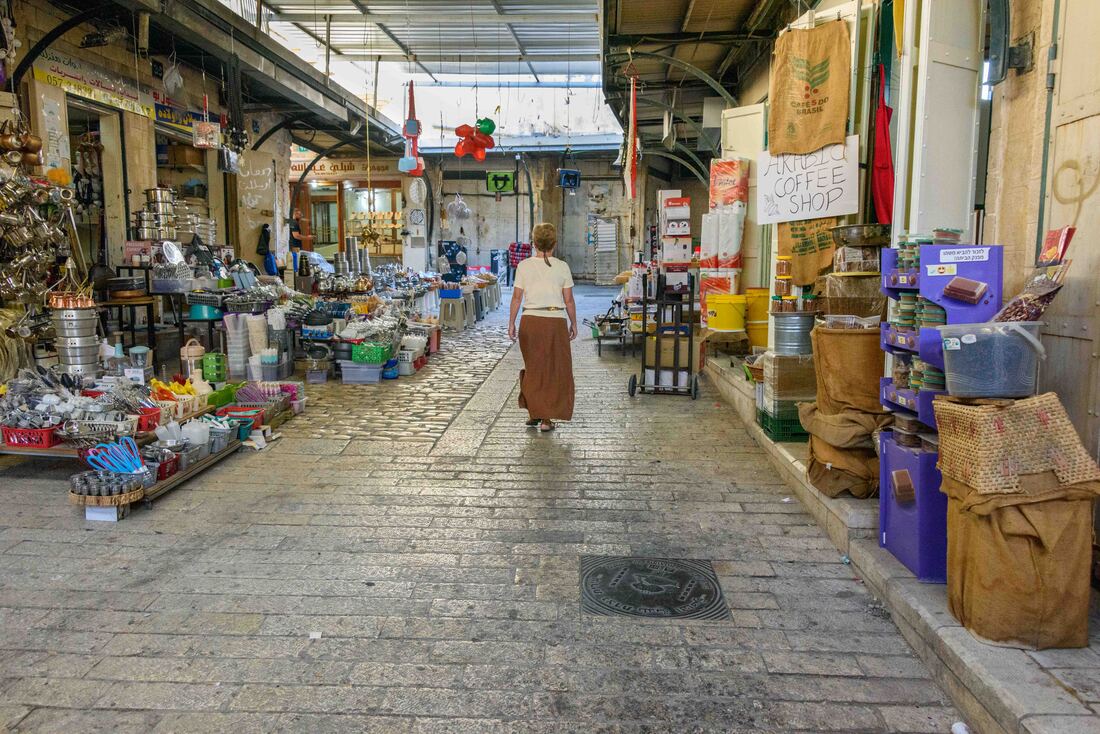
The next morning, while shops were setting, up we searched for food before heading out for a tour. When a local overheard us we were escorted to his friend’s small bakery where we were invited into the kitchen to see our zaatar manakeesh being prepared. Below: the baked flat bread topped with a blend of oregano, basil, thyme, savory and sesame seeds mixed with olive oil packed a a flavour punch.
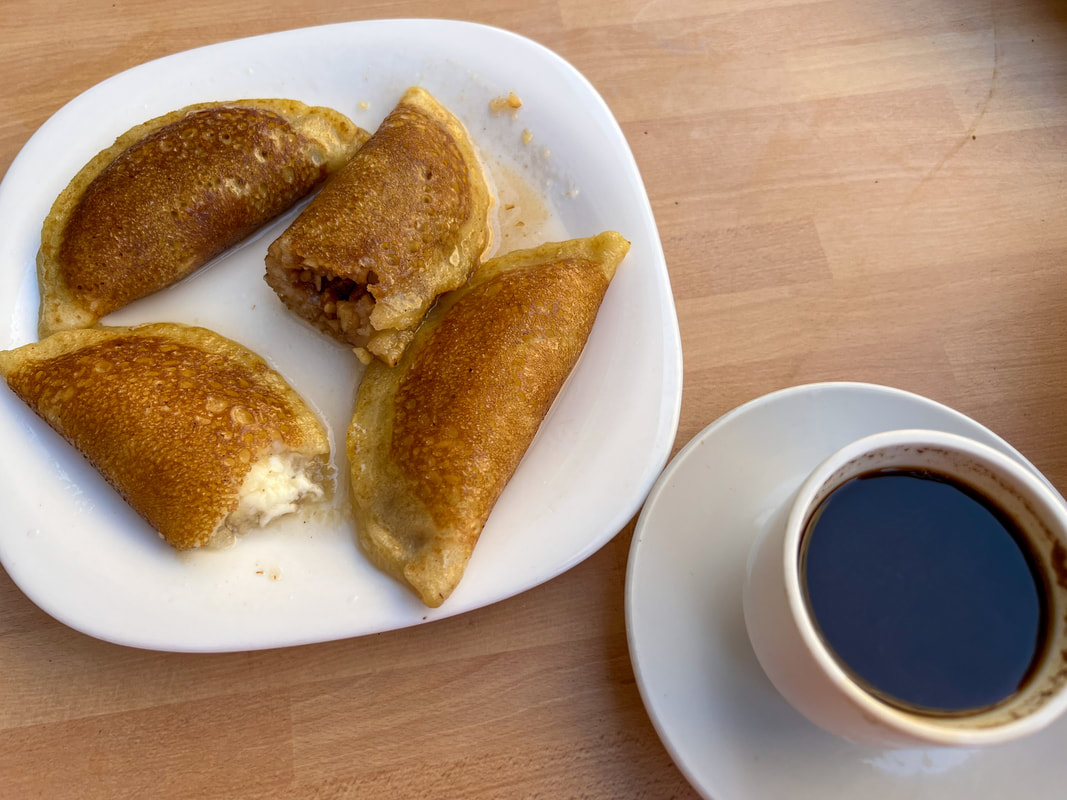
Katayef – cheese or walnut stuffed sweet pancakes served with geranium syrup. Normally reserved for after Ramadan, Abu Ashraf is famous in town for being the only restaurant serving them year-round. To cut the sweetness, a strong cup of Arabic coffee with crushed cardamon does the trick. There will be sugar withdrawal when we leave.
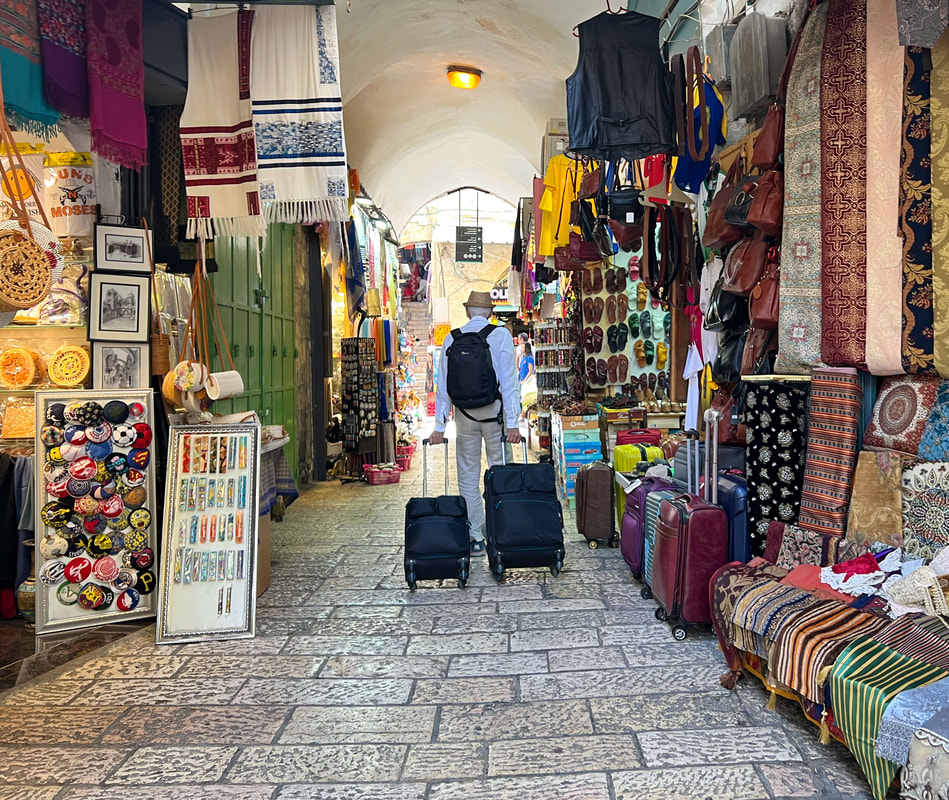
Our first inter-country bus experience was unnerving. At the bus stop a man approached a young woman obviously wanting money. It was unclear but he may have been mentally challenged. He kept touching her arm and she kept pulling back and then he and Rick had a tug-of-war when the man tried to take a container of food we had placed on top of our suitcase. Failing at both efforts he grabbed the woman’s breast. Consequences were swift. Five men came from different directions yelling at the man and shooing him away, water was brought to the girl and we gave her a Kleenex to dry her tears. When the man approached a 2nd time he was repeatedly struck with a stick by one of the bystanders until he finally left for good. The whole incident had clearly upset all involved. Above: leaving our Jerusalem apartment that was nestled between 2 souq stalls.
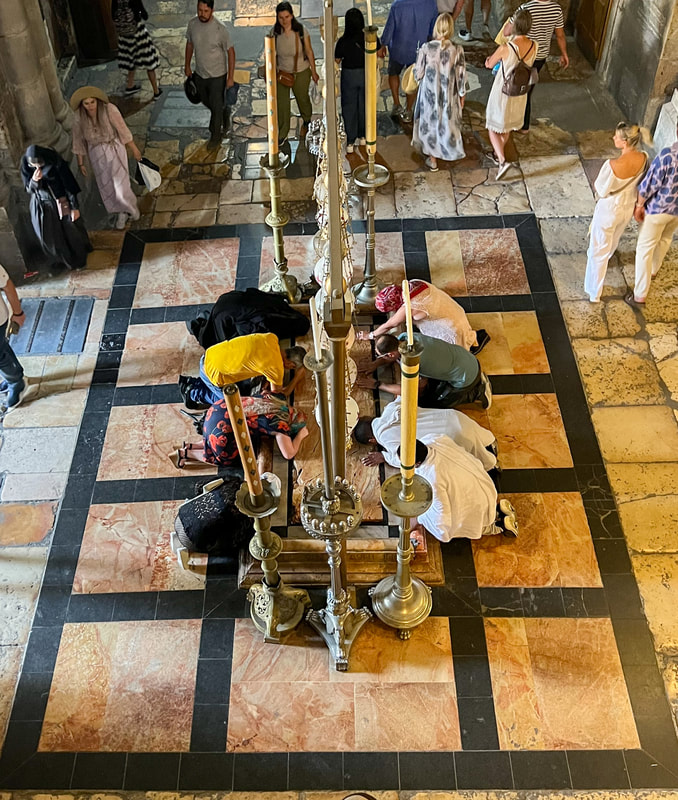
The acclimatization to this Holy Land has been progressive, from anything goes Tel Aviv to more conservative Nazareth, and finally the most conservative and devout Jerusalem. The sensory overload is palpable for us. It’s hard to imagine how it affects the busloads of religious tourists moving en masse from one revered site to the next, kissing and touching anything considered holy. (Jerusalem, Sept 20-24/22)
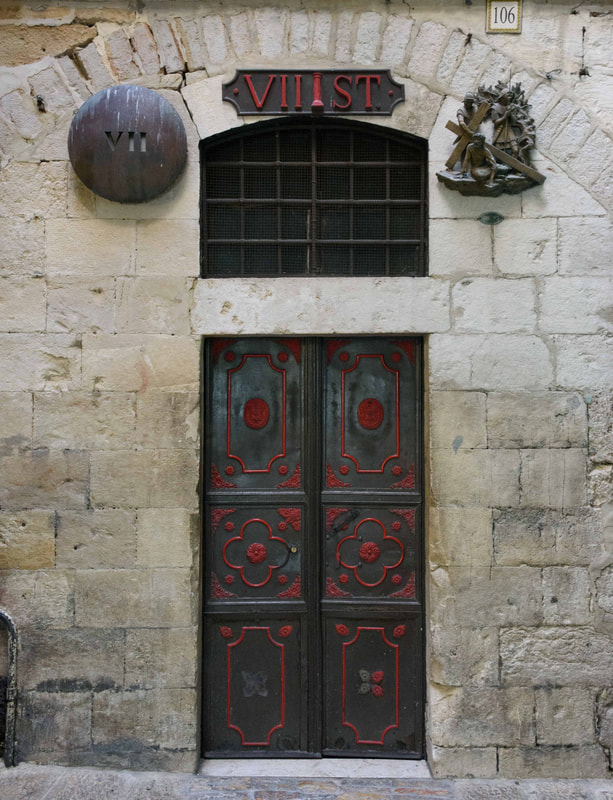
Via Dolorosa is a 3 (souq) block long path that is believed to be the route Jesus took as he carried the cross on the way to his crucifixion. The actual route has been a matter of debate, but for the last 200 years, this is the accepted one. Along the way, markers like the one in the top right denote a station along the path where something of note happened to Jesus.
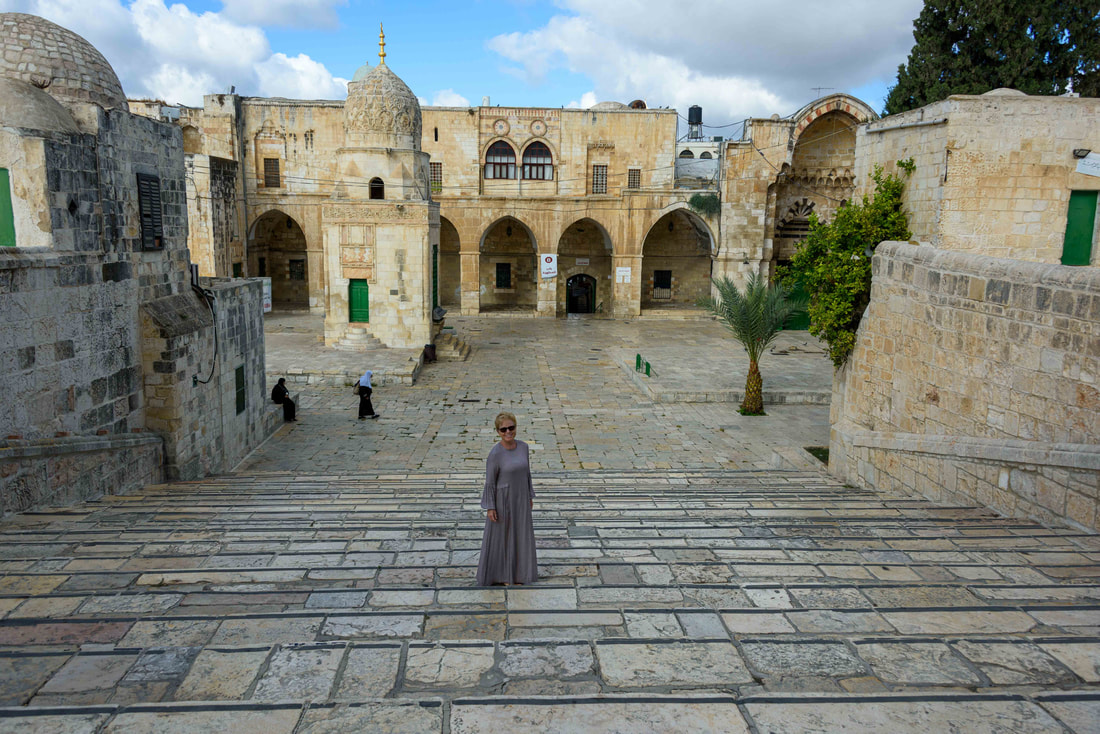
The epicenter of the Old City is the Temple of the Mount. A sprawling complex now, its humble beginnings date back to the 10th century BCE (!!) with its first temple. Although the site is revered by Christians, Jews and Muslims as one of their holiest sites, only 1 of the 12 entrances are open to non-Muslims (with all seriously protected by the military).
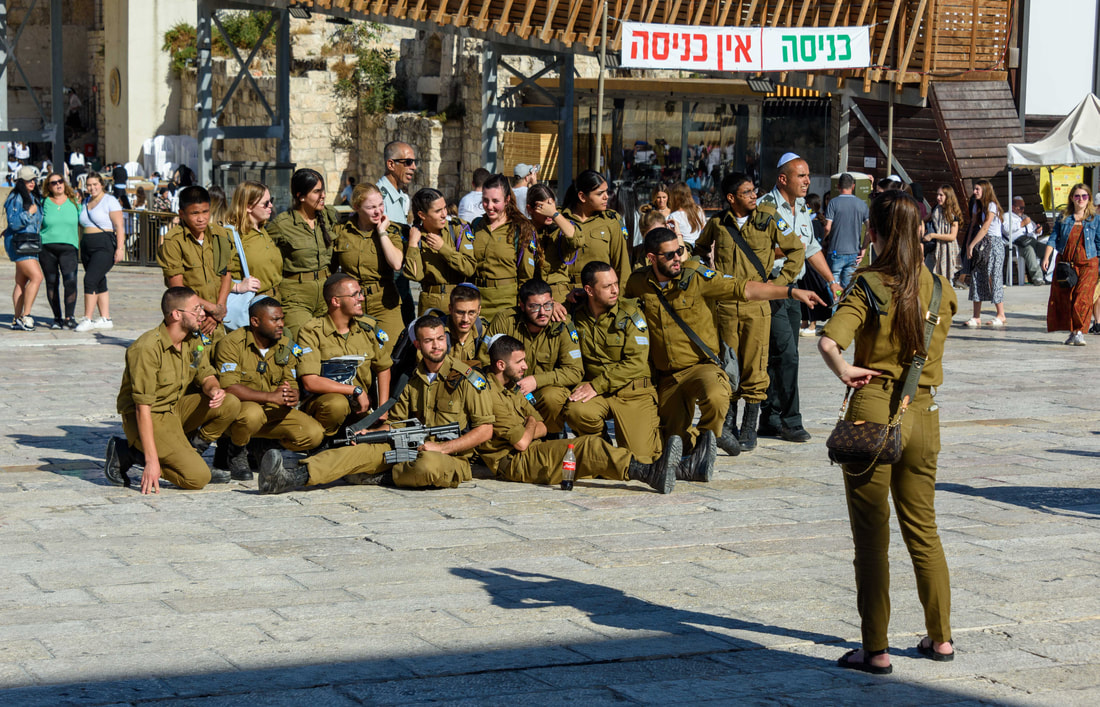
Relations between the Jews, Arabs and Christians are long and complex, yet for the most part they live harmoniously in their respective neighborhoods in the Old City. That said, Rosh Hashanah (Jewish New Year) is in a few days and we’ve been warned of skirmishes that are best avoided. About 1,000 extra soldiers were brought in to maintain the peace. Several took advantage of the trip by visiting the Western Wall and having pics taken of their units. They looked so young to wander the streets holding such powerful weapons.
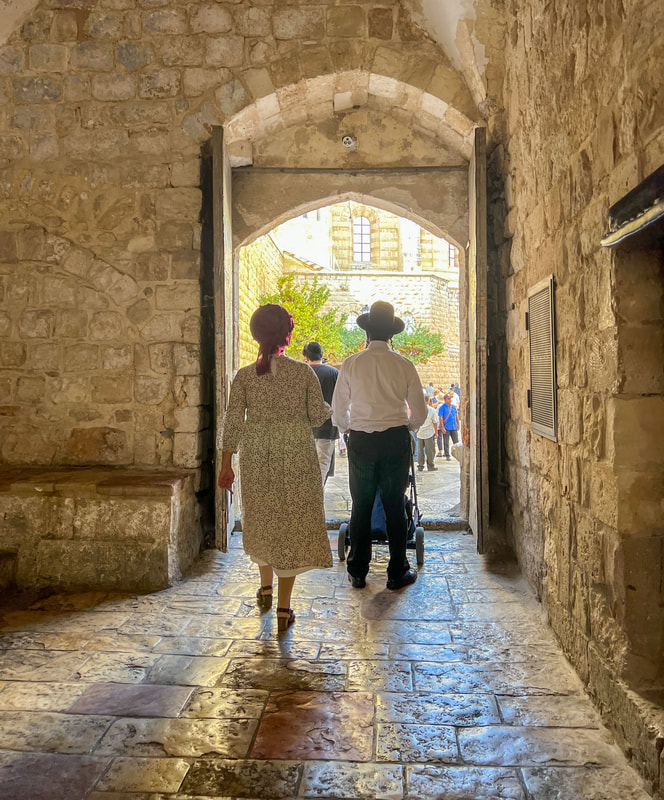
A Hasidic couple approach the Tomb of King David, another sacred site for the Jews. Until recently ultra-Orthodox Jews had enough representation in government to control the politics that enable their belief that studying the Torah comes first and everything else comes second. That latter includes having a paying job and doing military service. Only about 50% of the men work while the remainder live on social programs to support their large families. As their percentage of the population quickly increases this is causing stress on the GDP and between the Hasidic and those funding the programs.
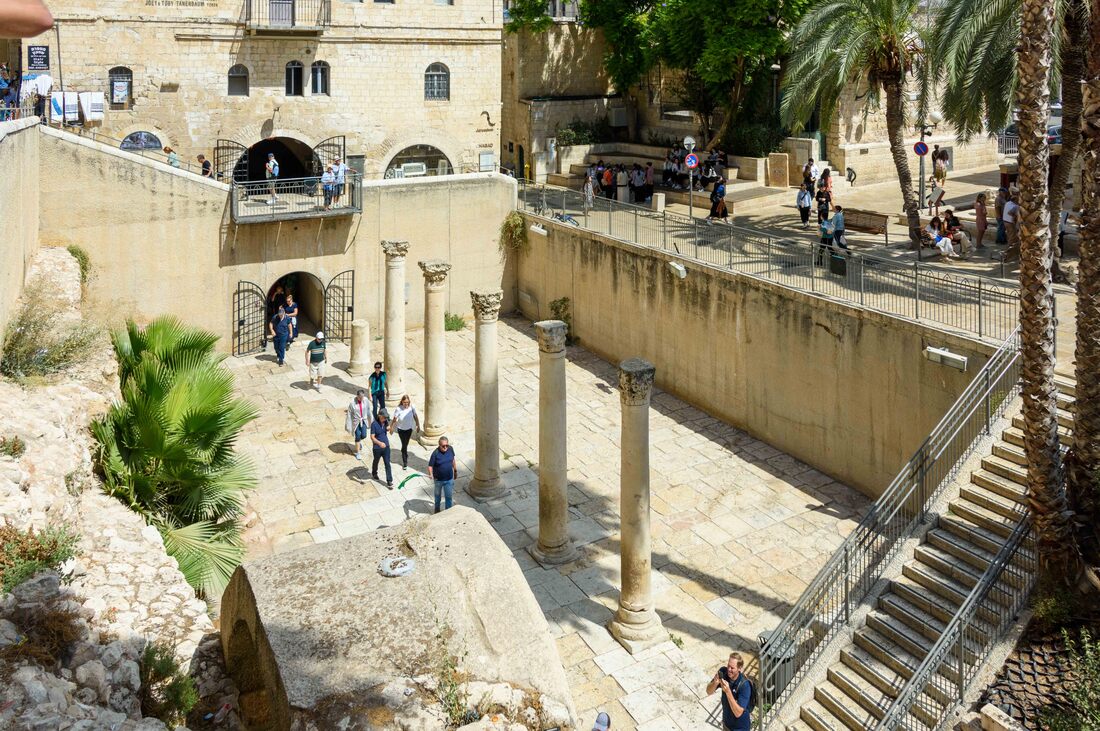
Walking through the Old City, we are reminded of the 3 millennia before us when the city of Jerusalem was first built, then razed and then rebuilt several times over, often a level or more above its predecessor. Above: today’s market is a level above its counterpart from the Roman Empire era 2,000 years ago.
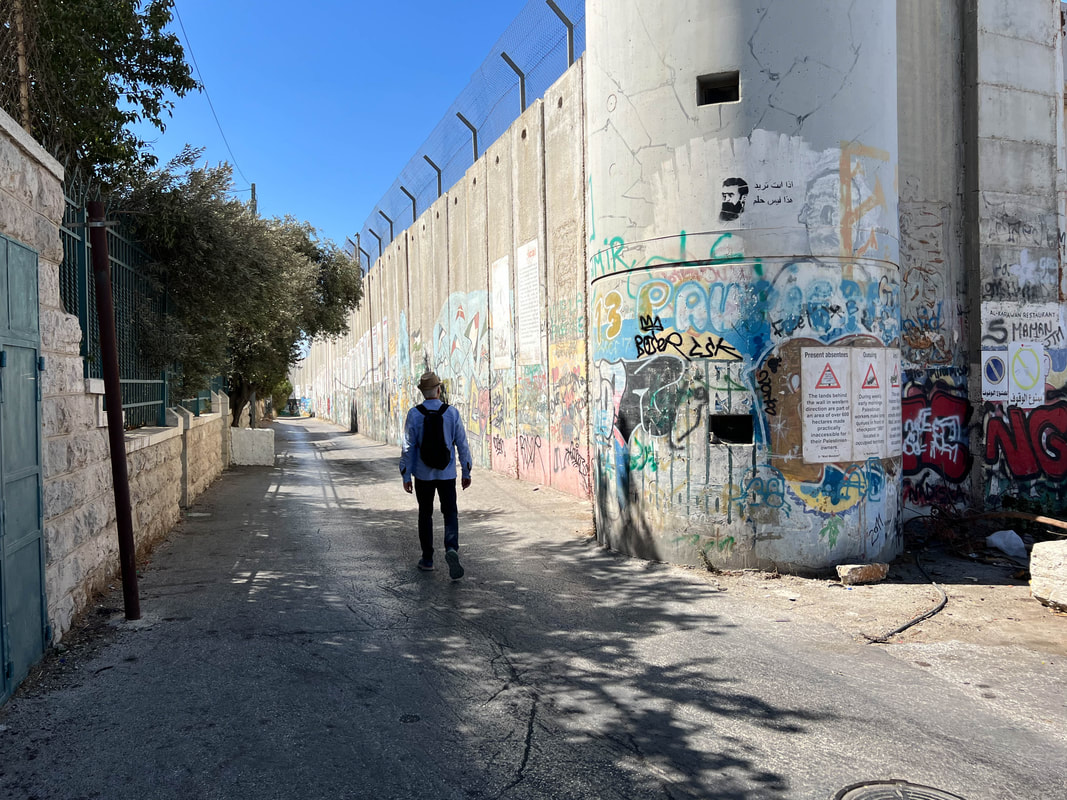
Eschewing recommendations to not attempt the crossing into Bethlehem on our own we gave it a go. With a turnstile at each end of a long cement corridor, it was unlike any we'd done before. On the return to Jerusalem, things reverted to business as usual with passports and baggage checked.
Because tourist dollars are so important to the Palestinians, the 5km from the border into downtown Bethlehem is considered relatively safe as long as travelers are aware of conditions at the moment. Above: Once you exit the border crossing on the Palestinian side there is a wall that separates the West Bank from Jerusalem.
(Bethlehem, Sept 21/22)
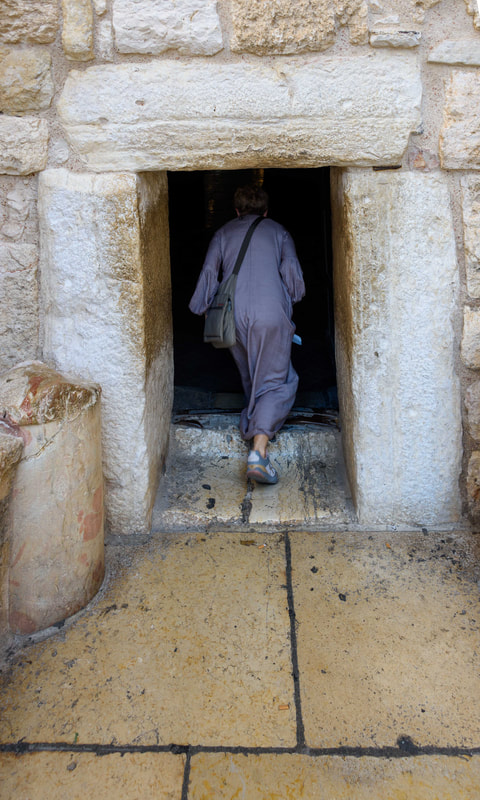
Built in the 3rd century CE, the Church of the Nativity is the longest continuously used place of worship for Christians and the reason many come to Bethlehem. A small opening, aptly called the Door of Humility, forces visitors to bend down to enter. In its day, it also kept people from bringing in their horses and livestock.

The grotto in the Church of the Nativity contains a 14-sided star in the floor which is believed to mark where Jesus was born. The faithful and curious joined the lineup that shuffled toward the star while a priest at the other end hustled out those who spent too long kissing or touching the holy spot.

